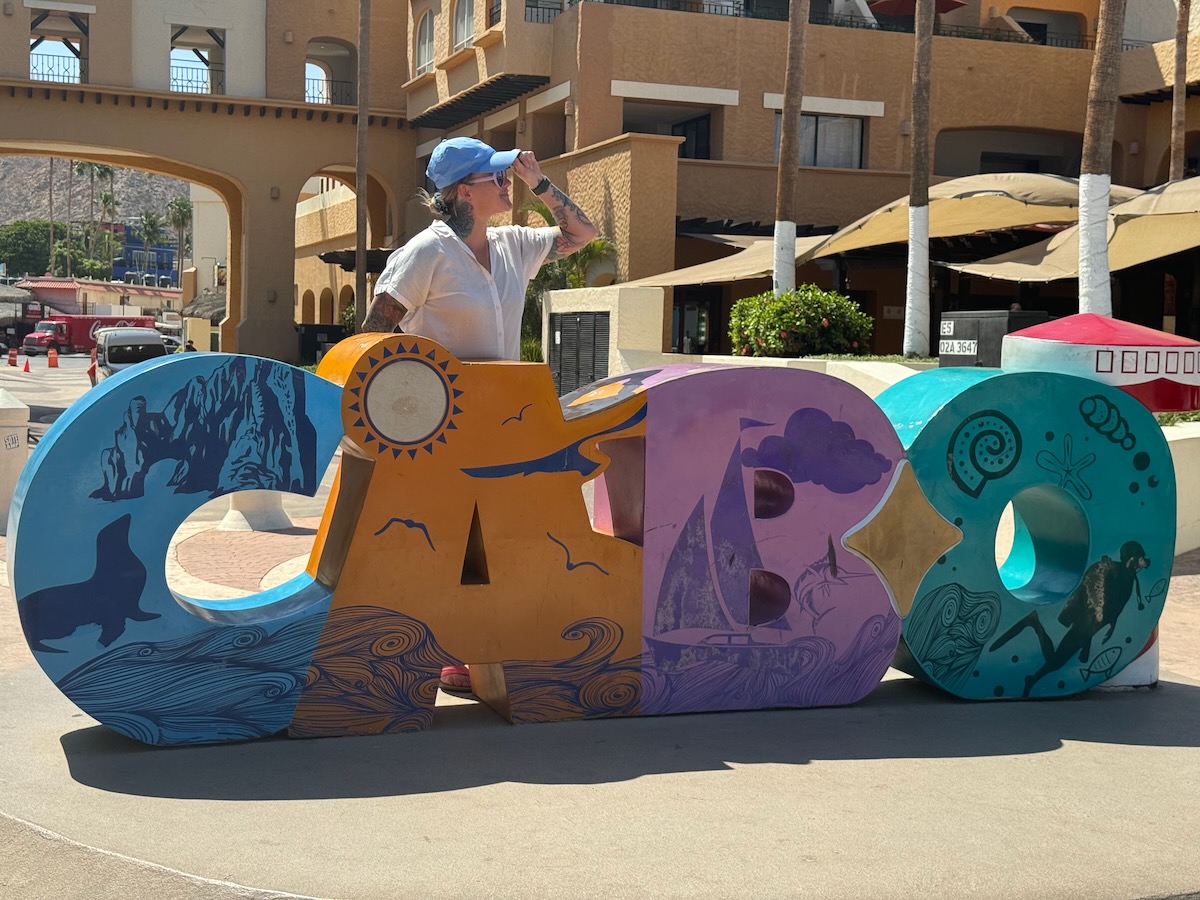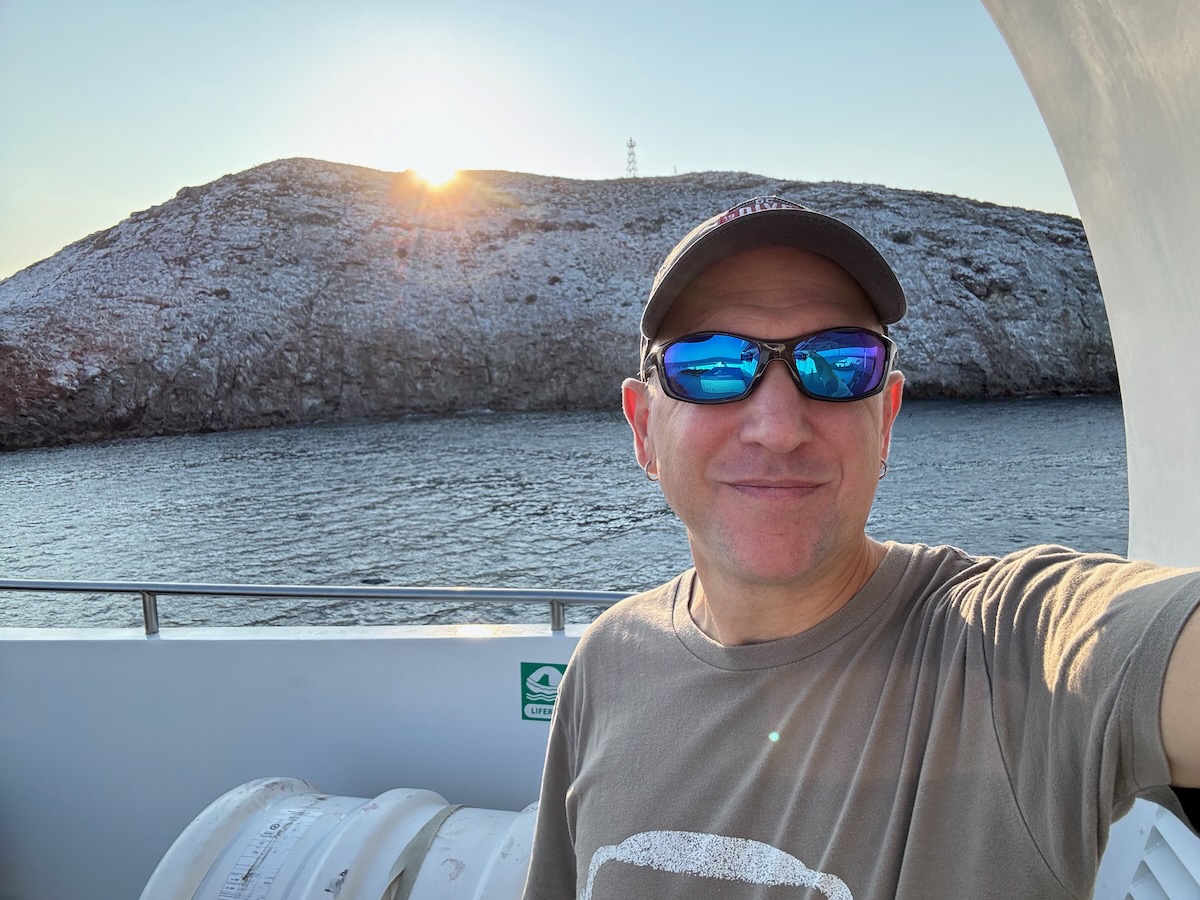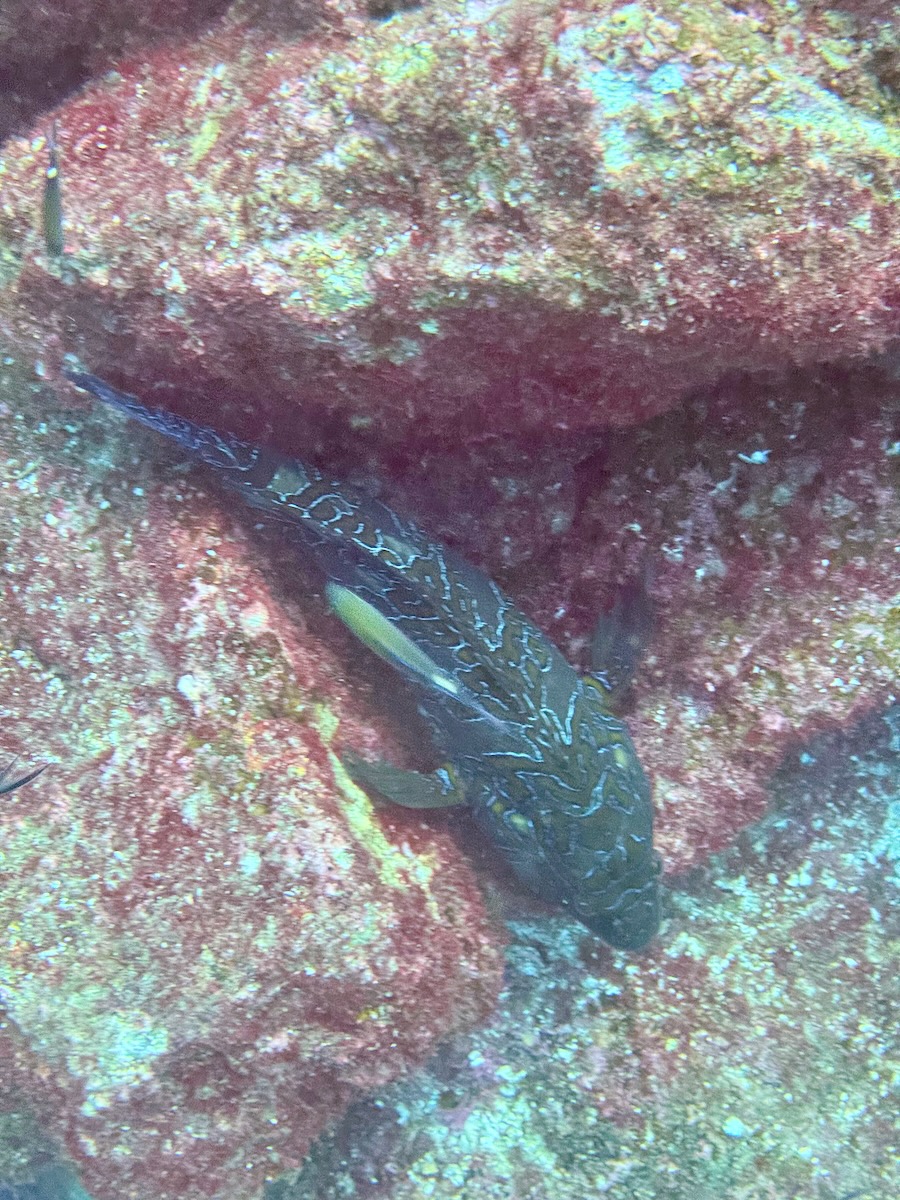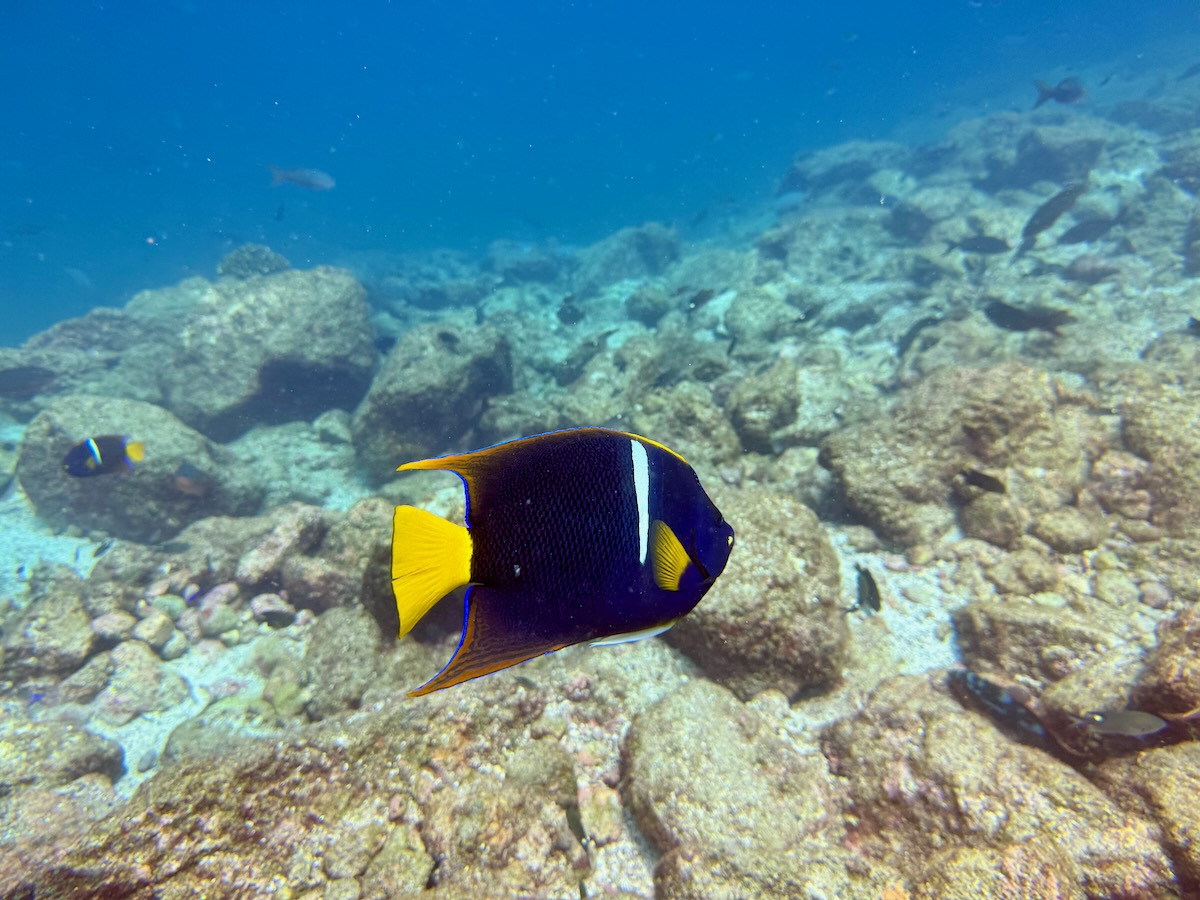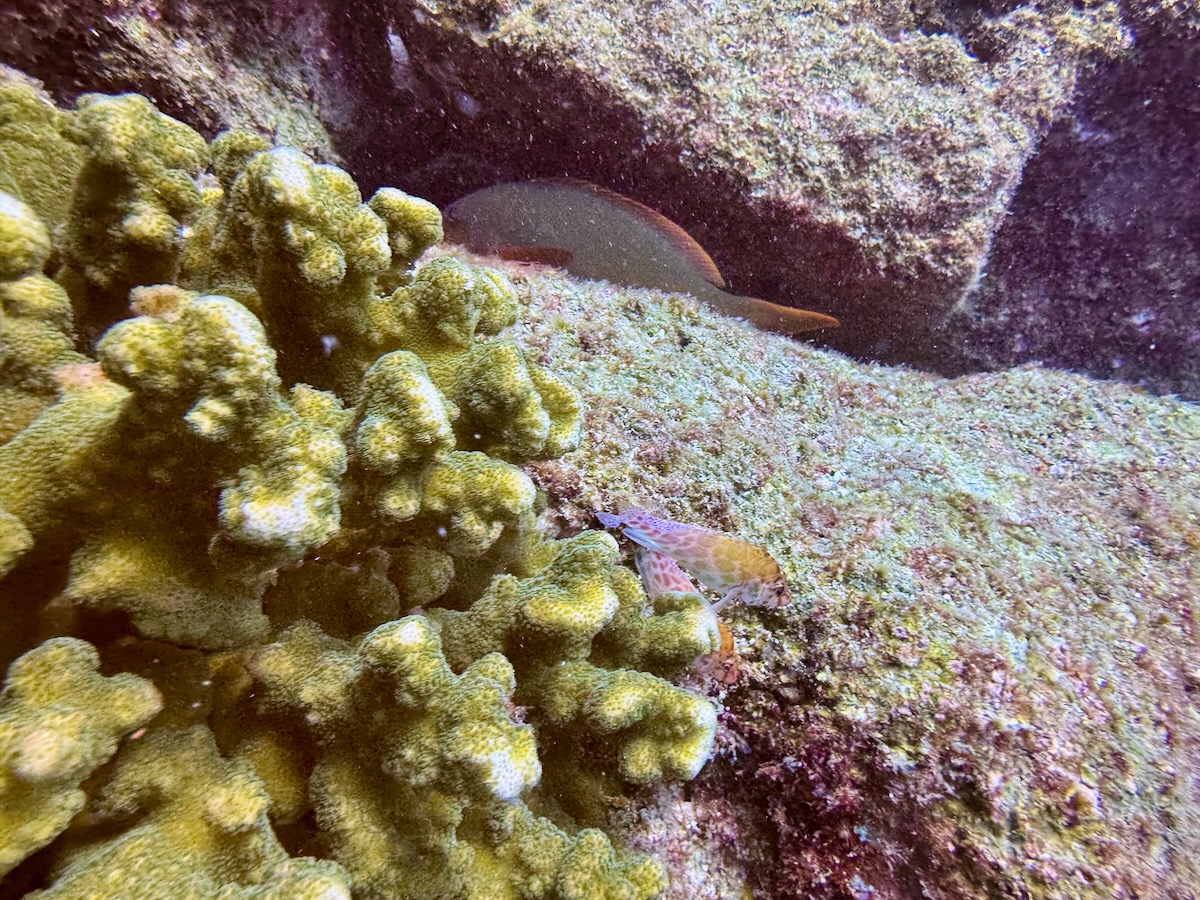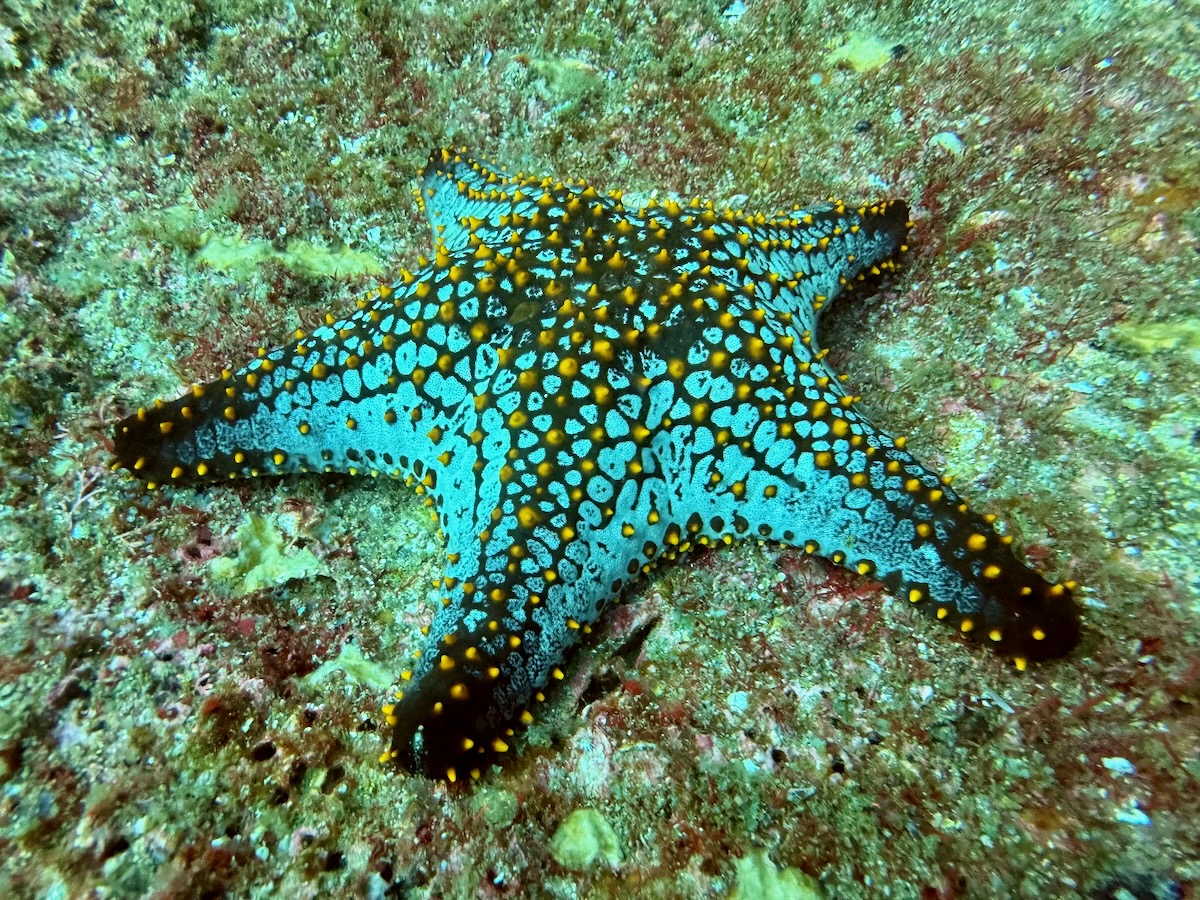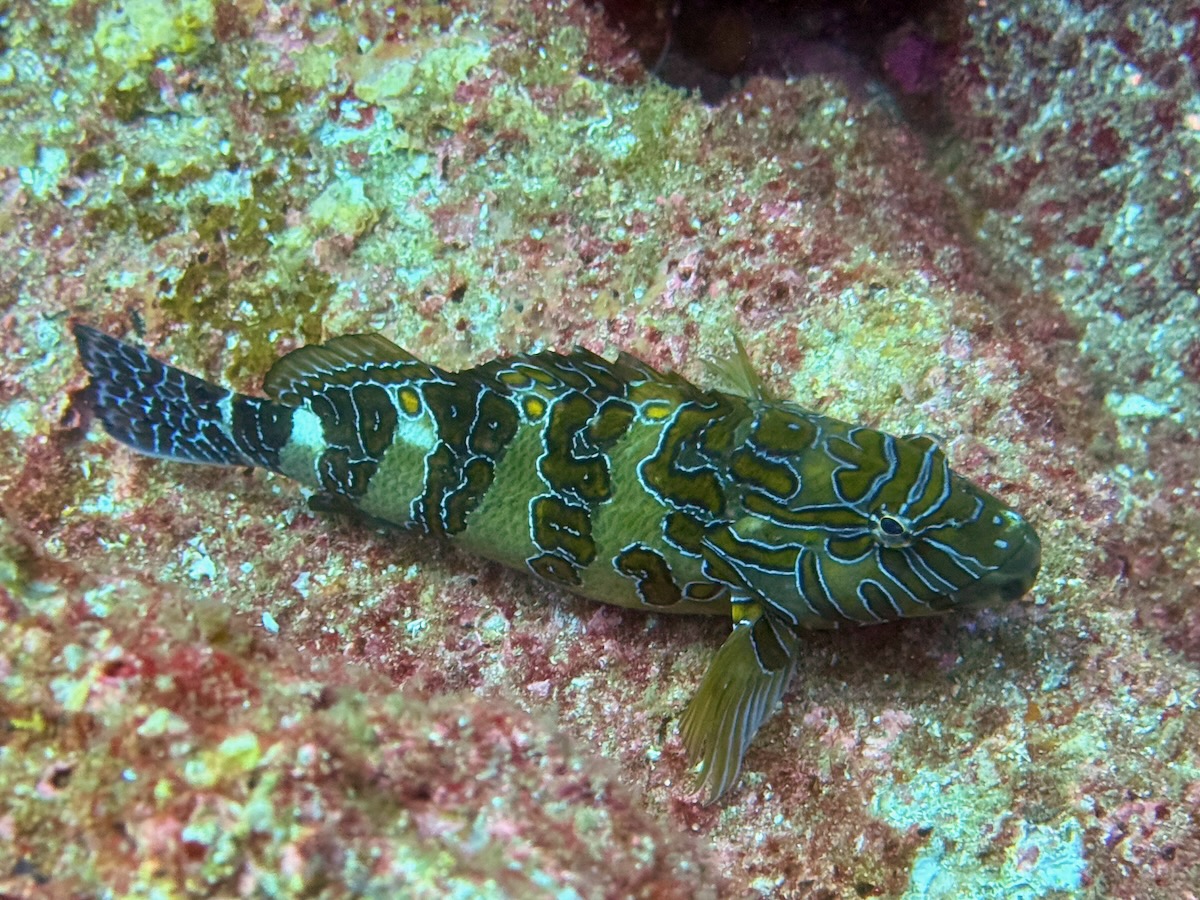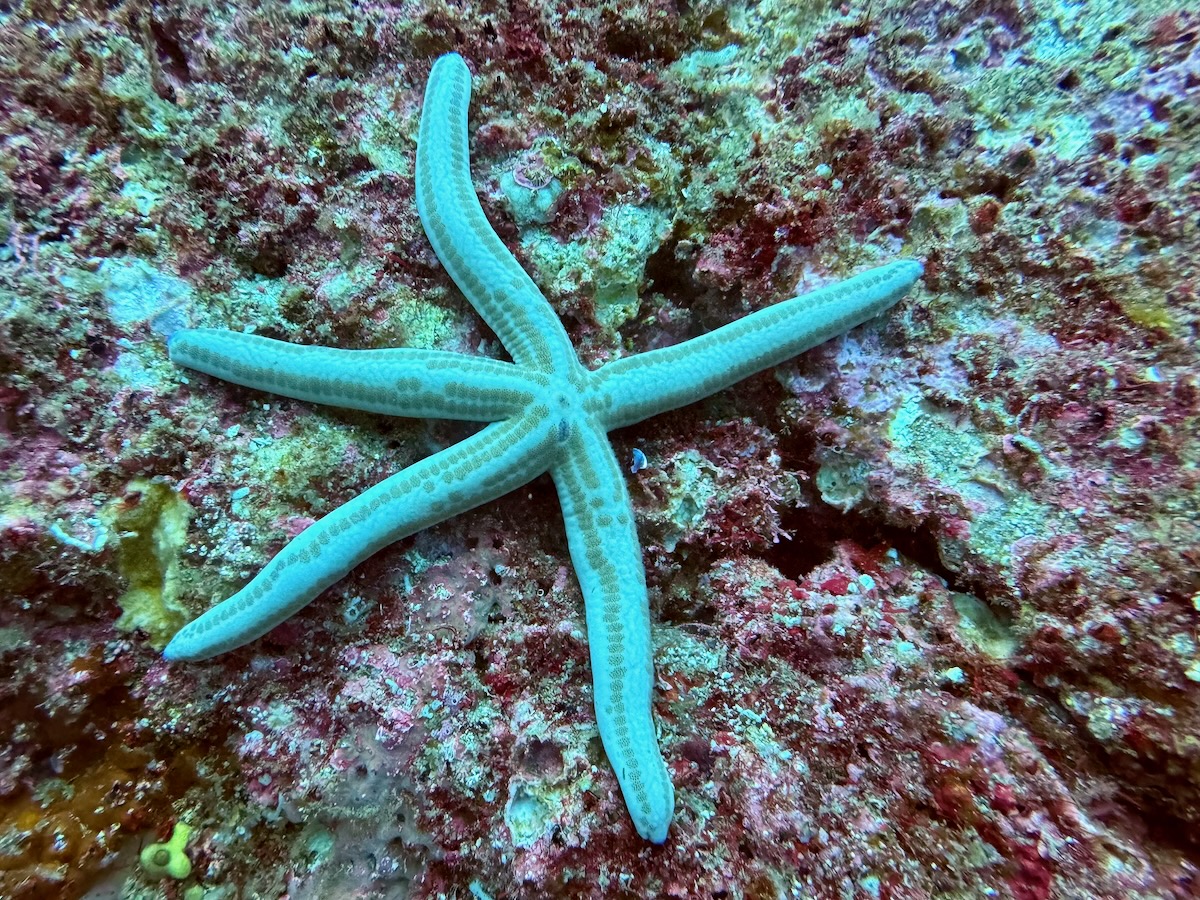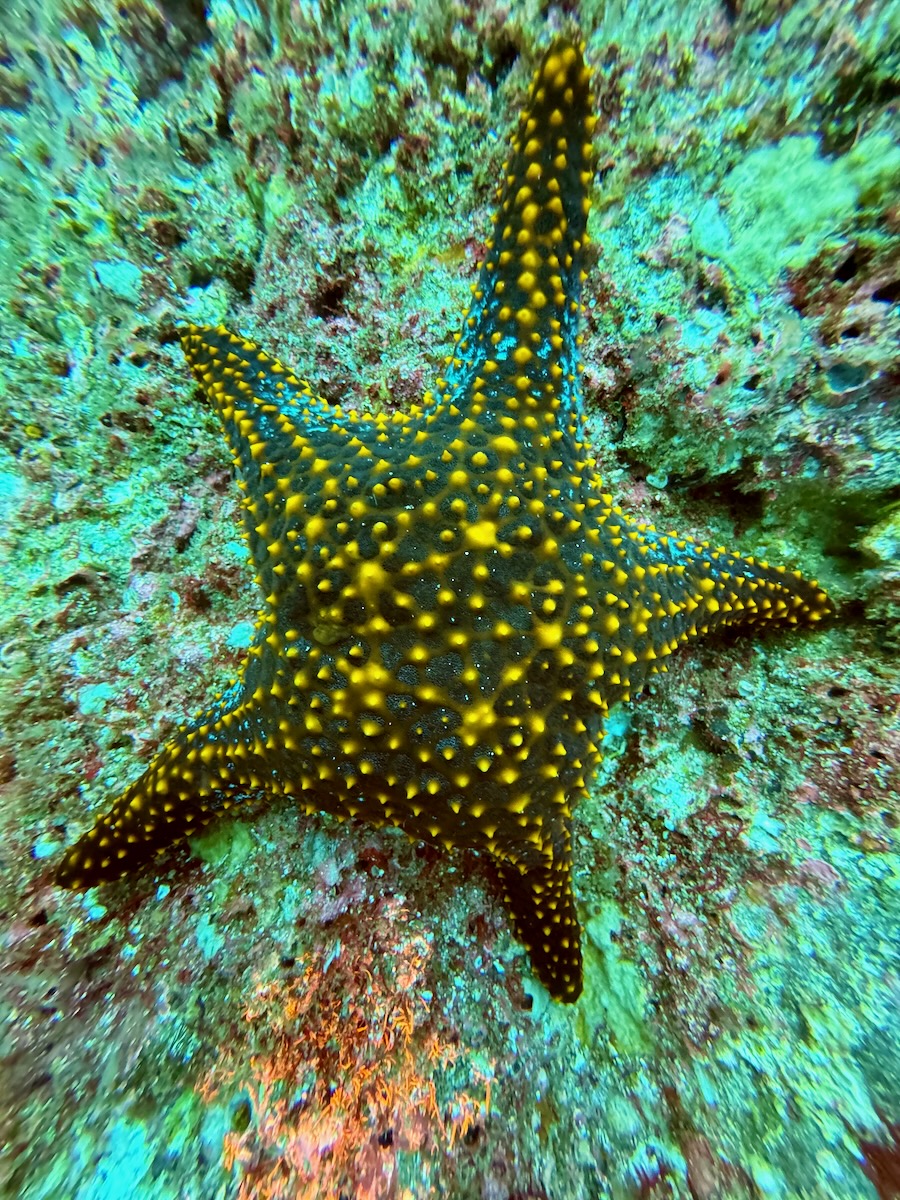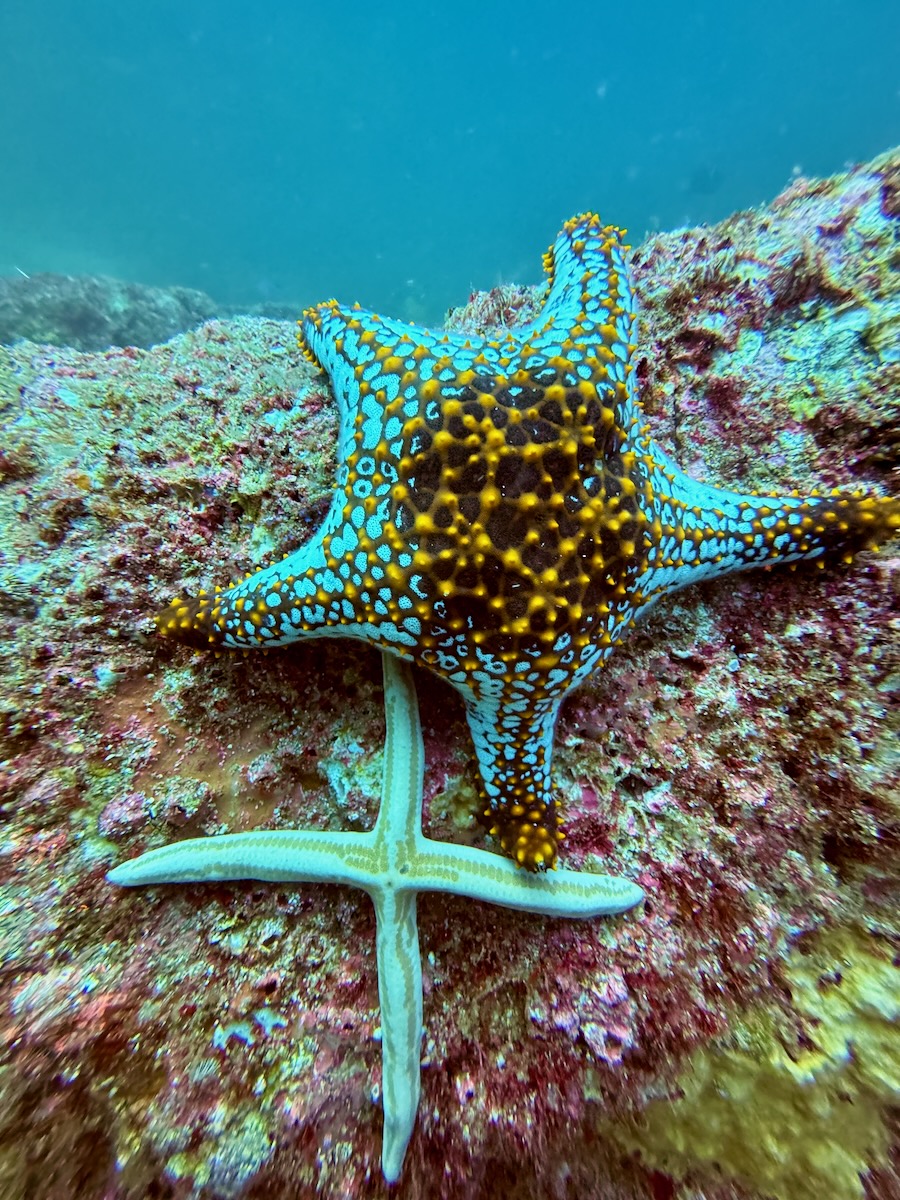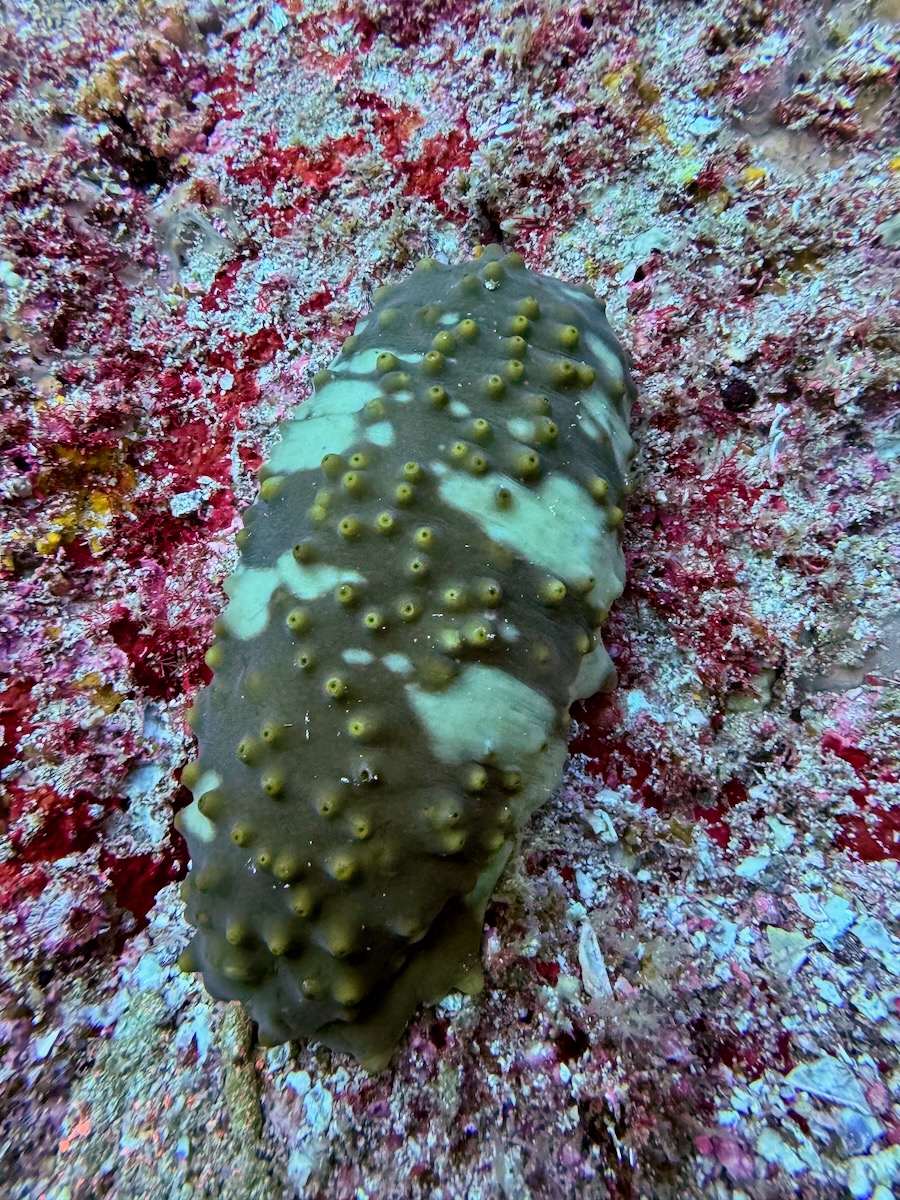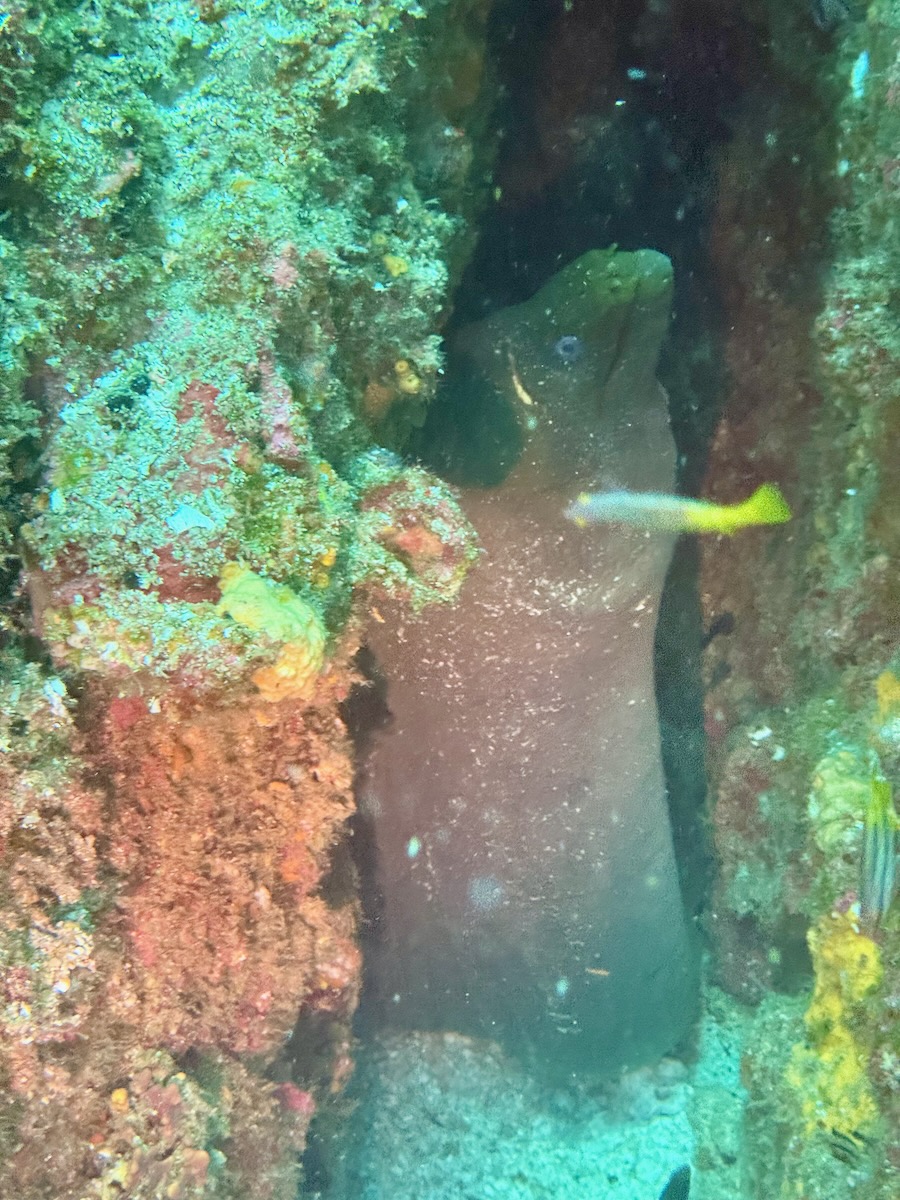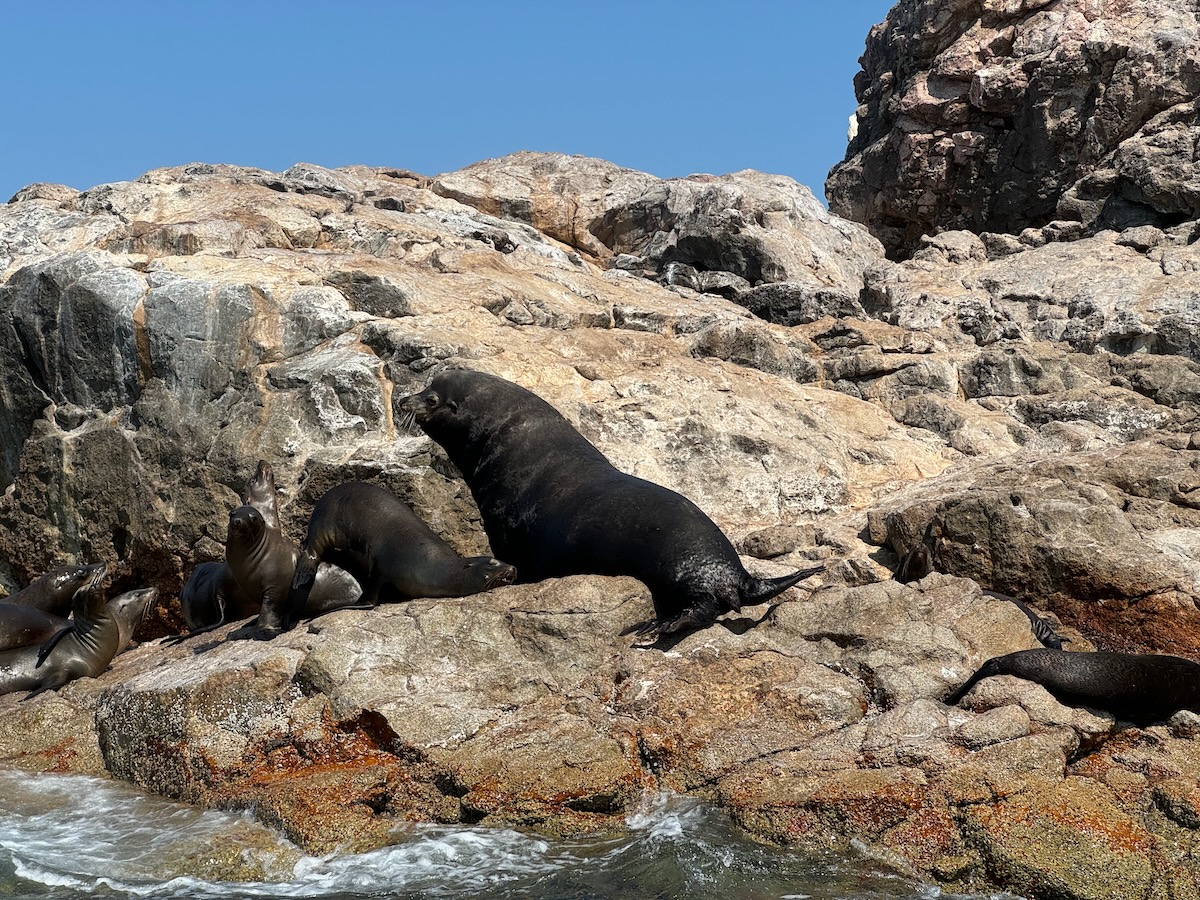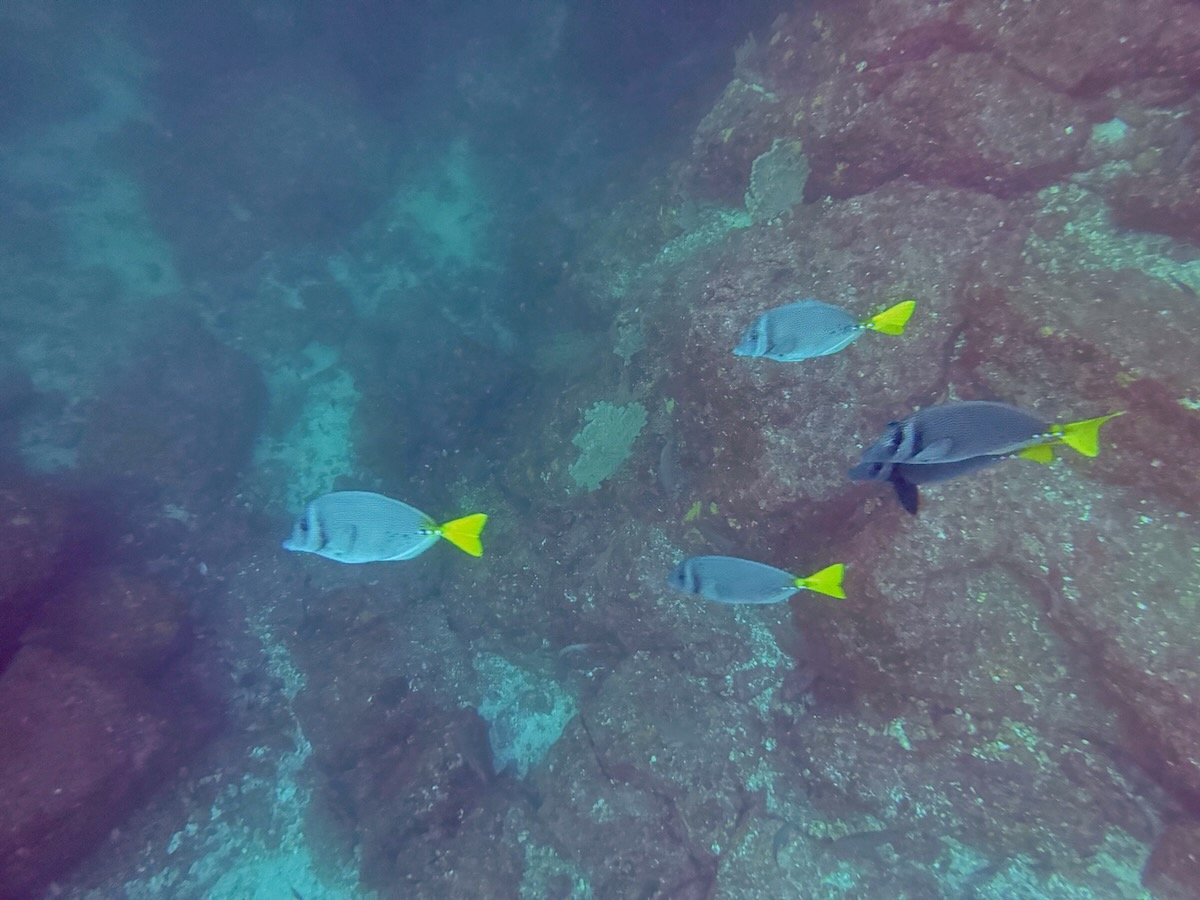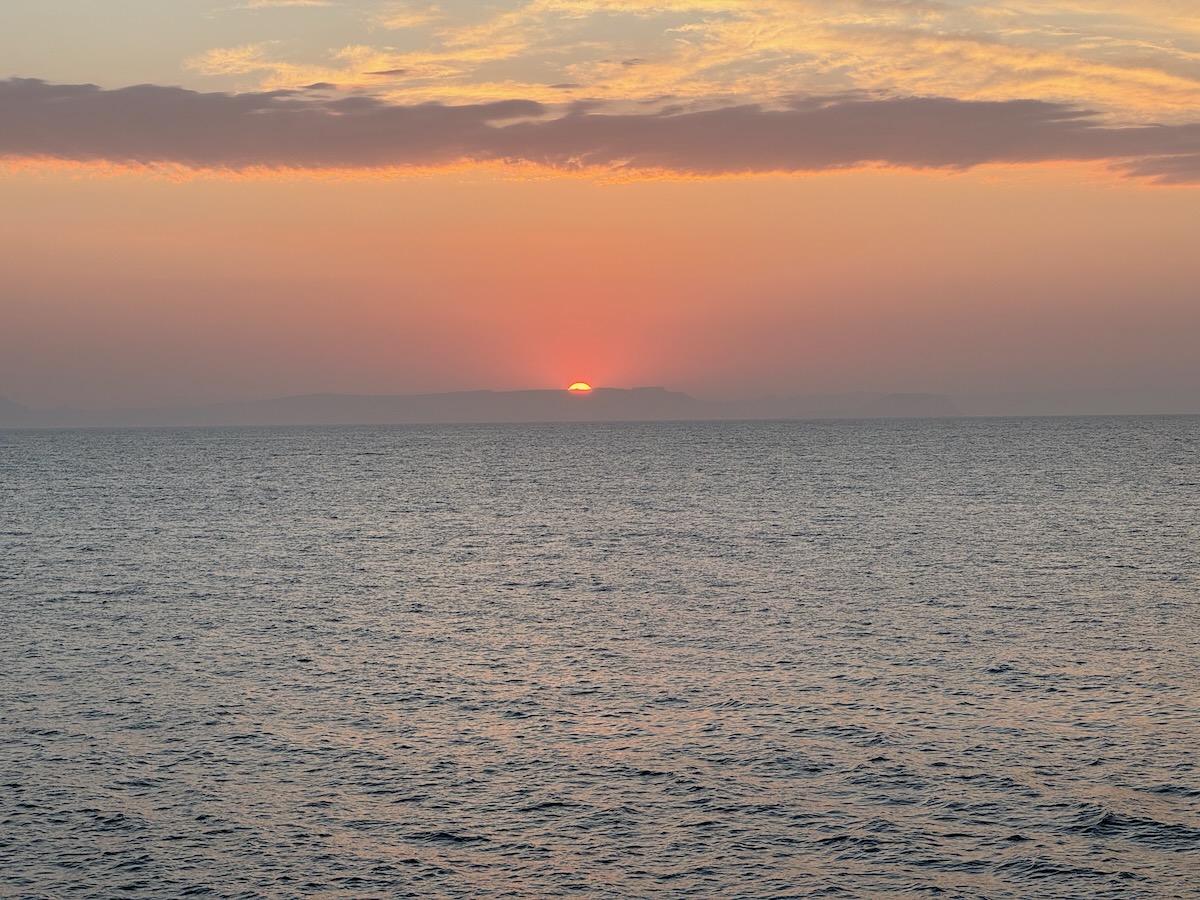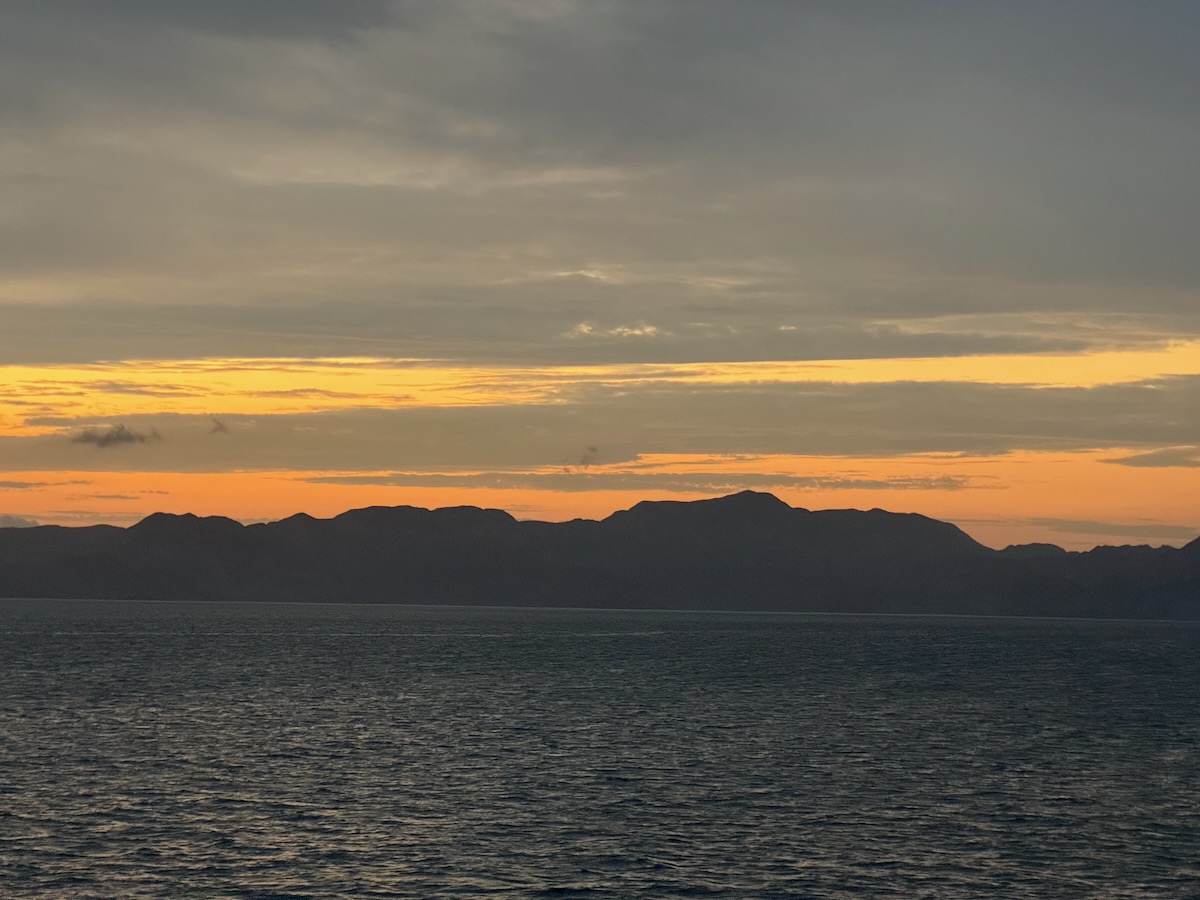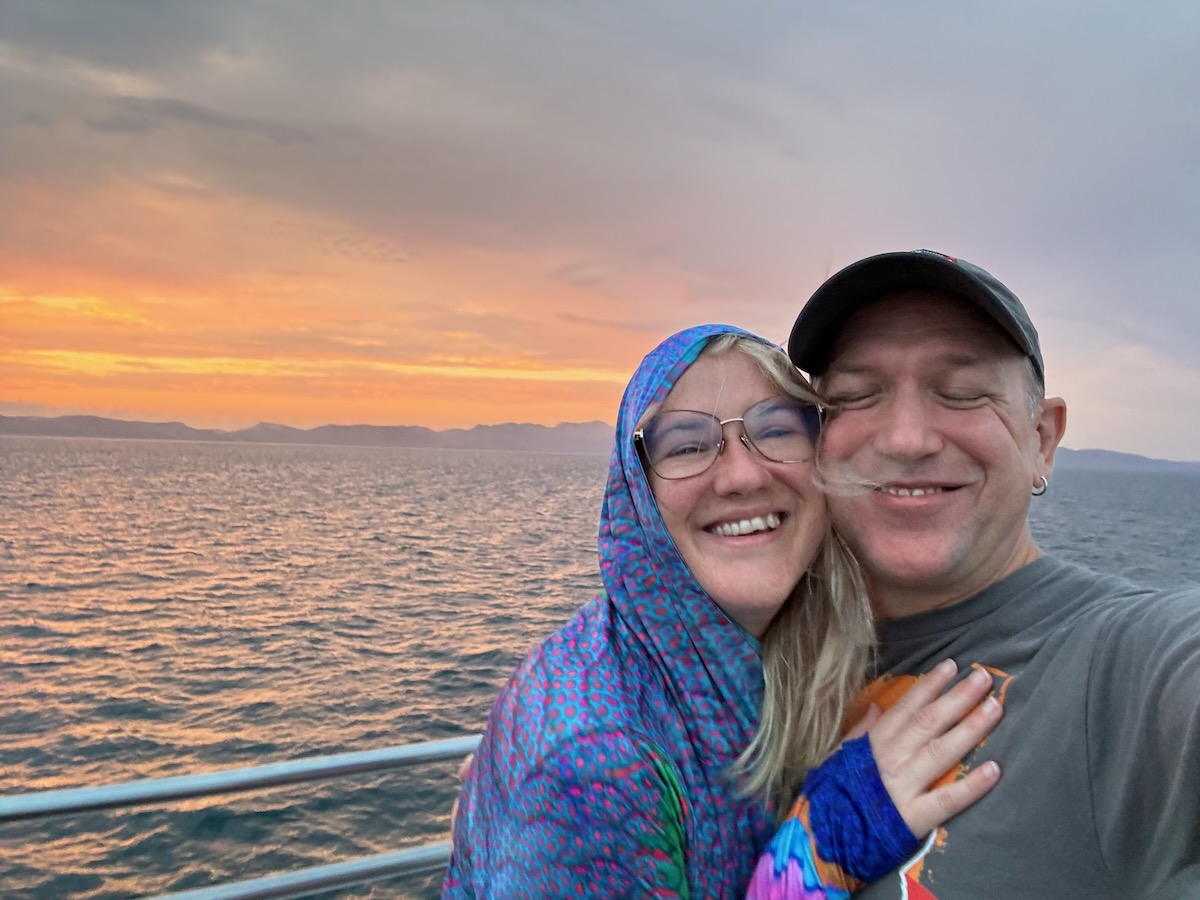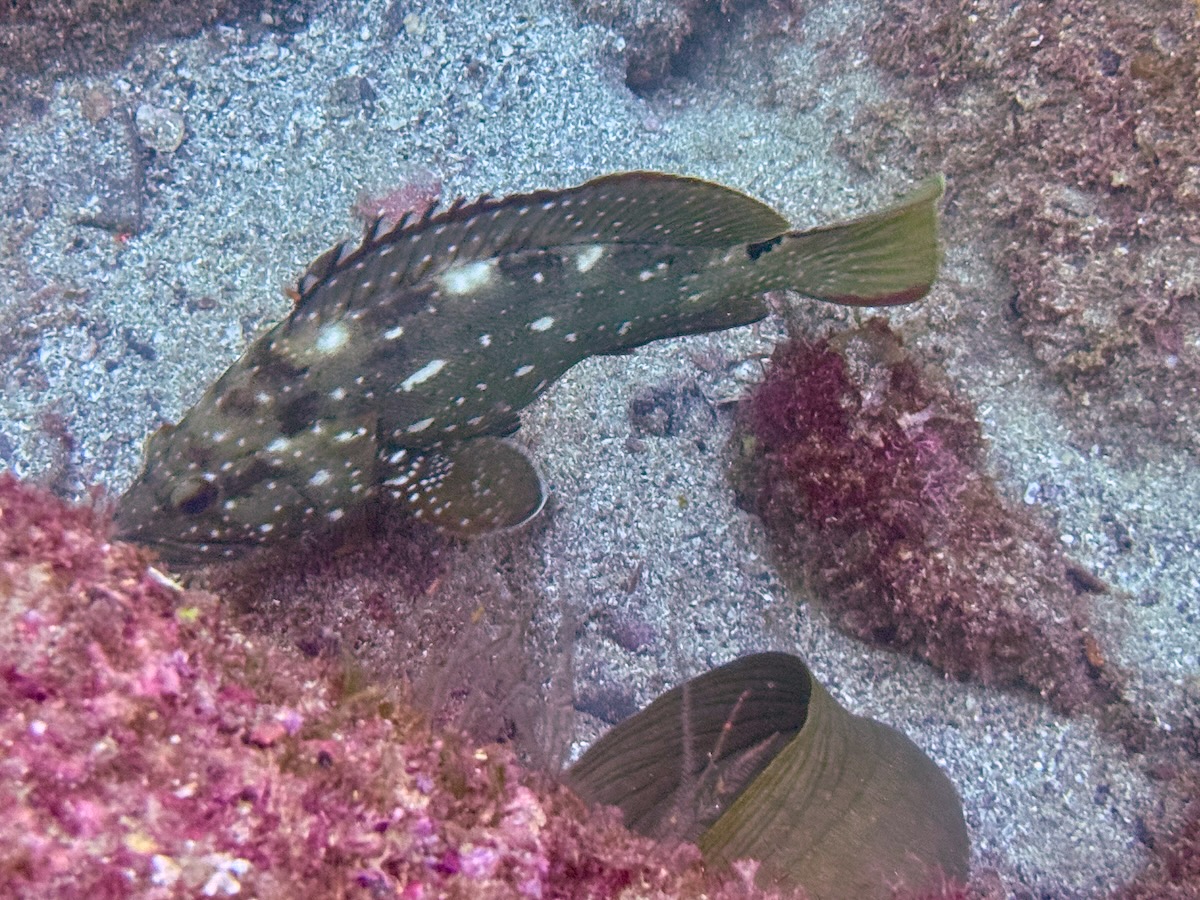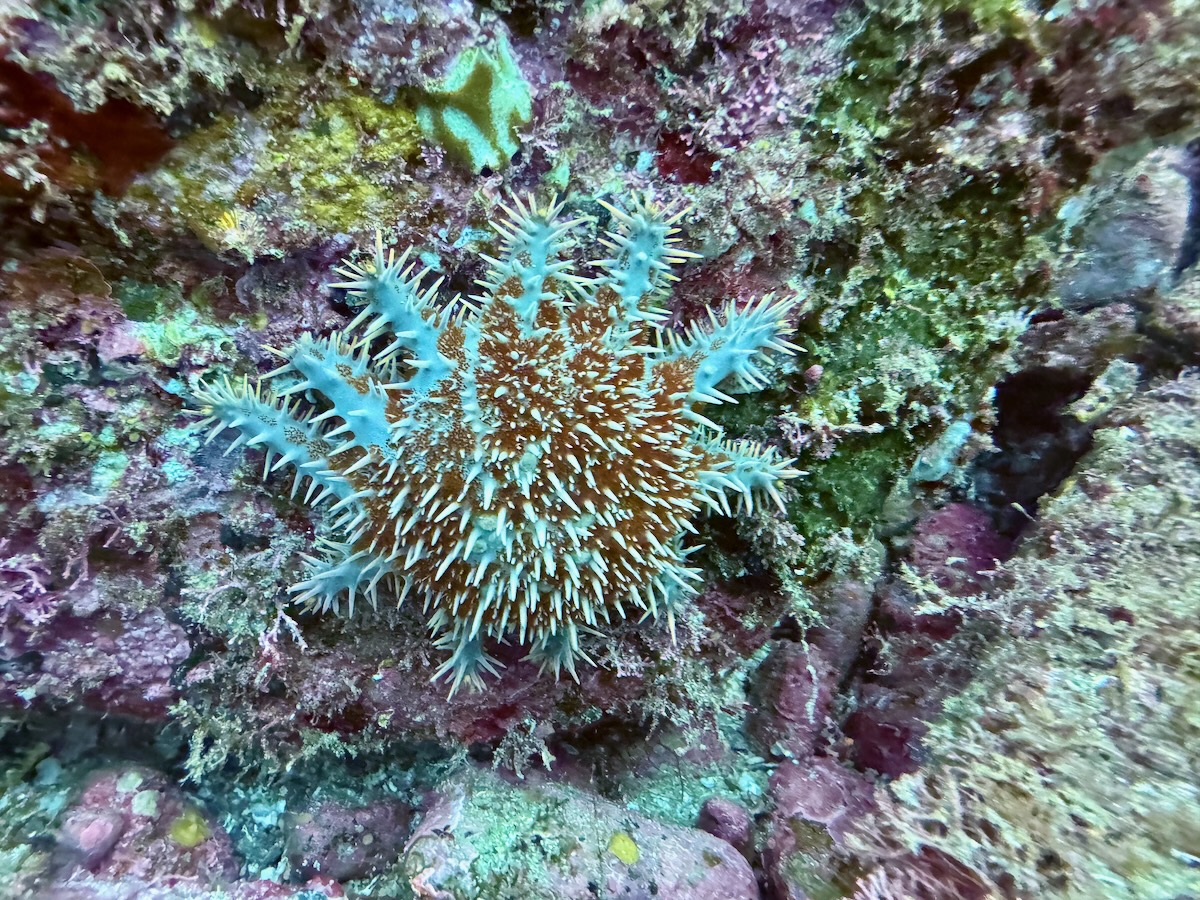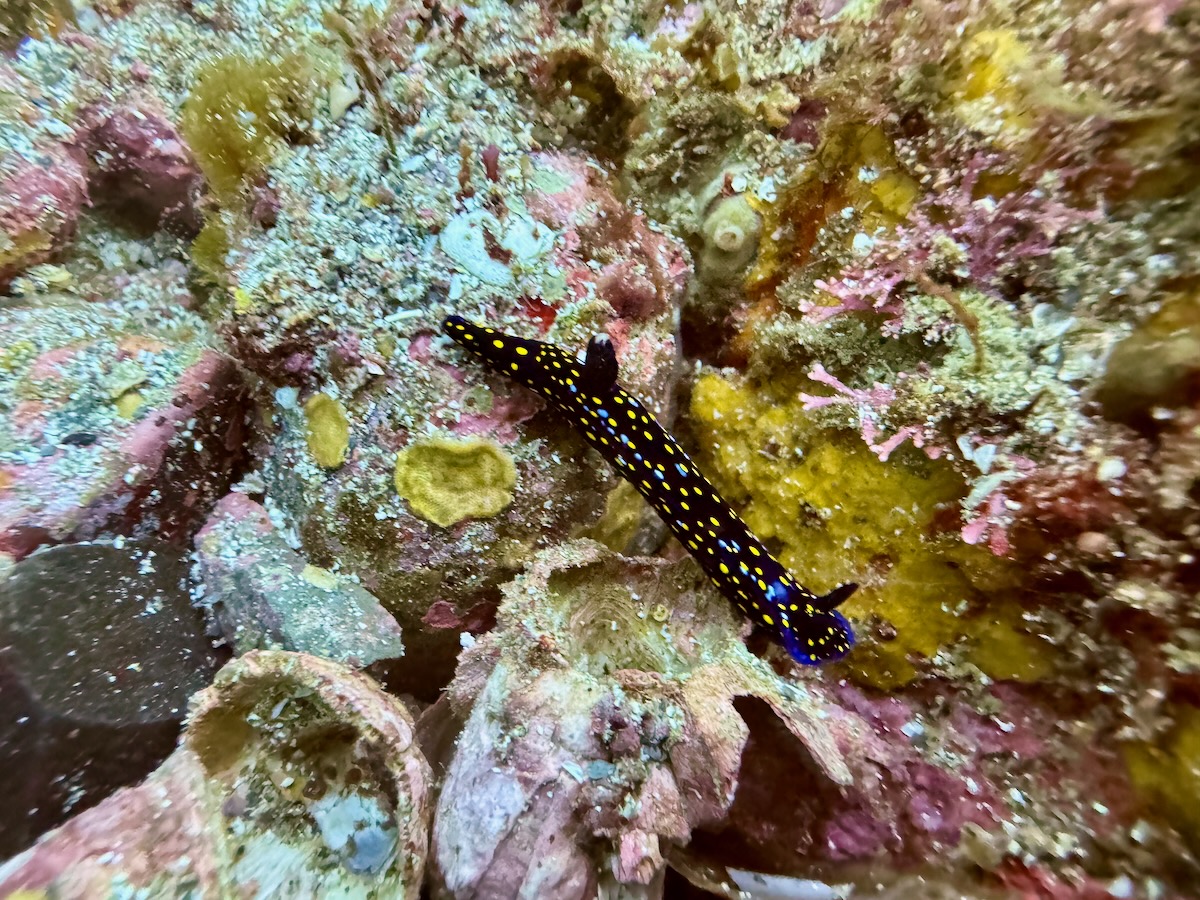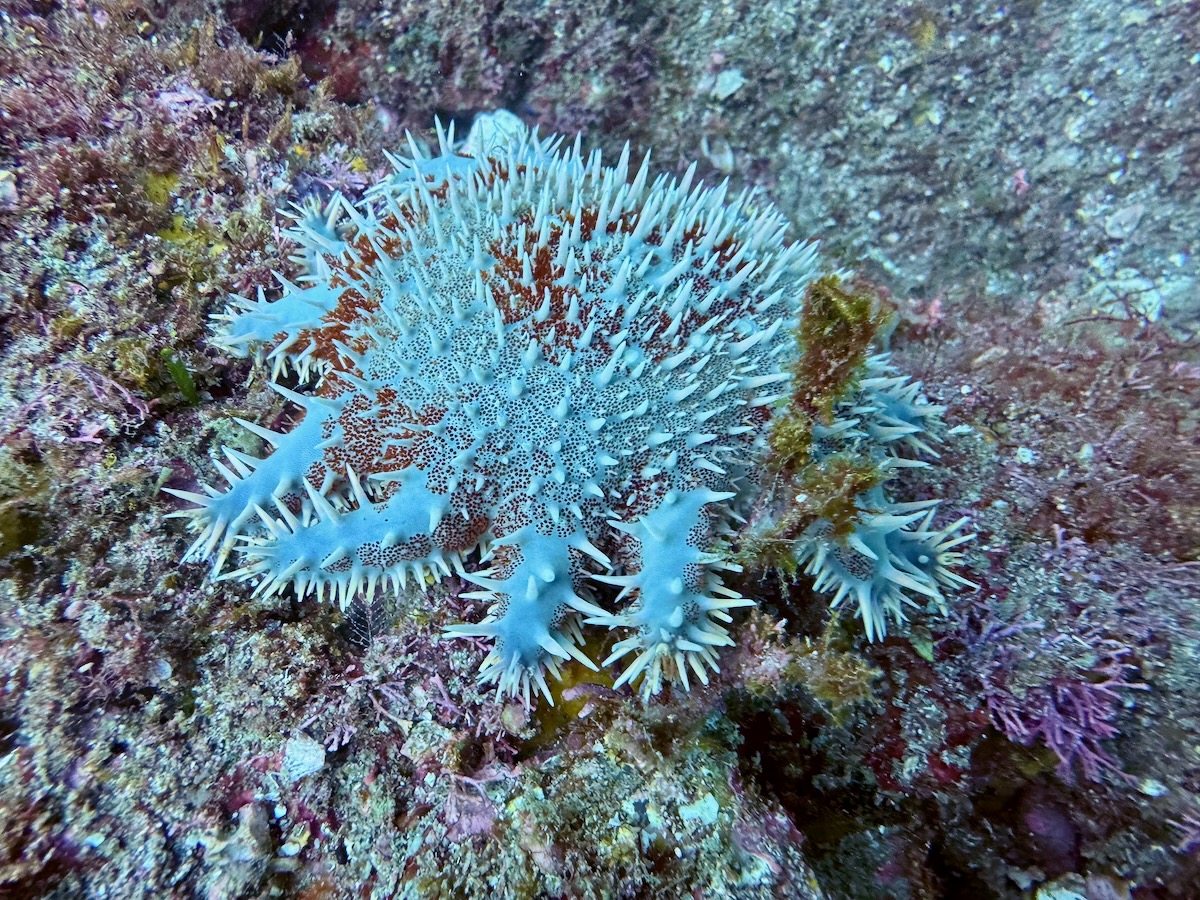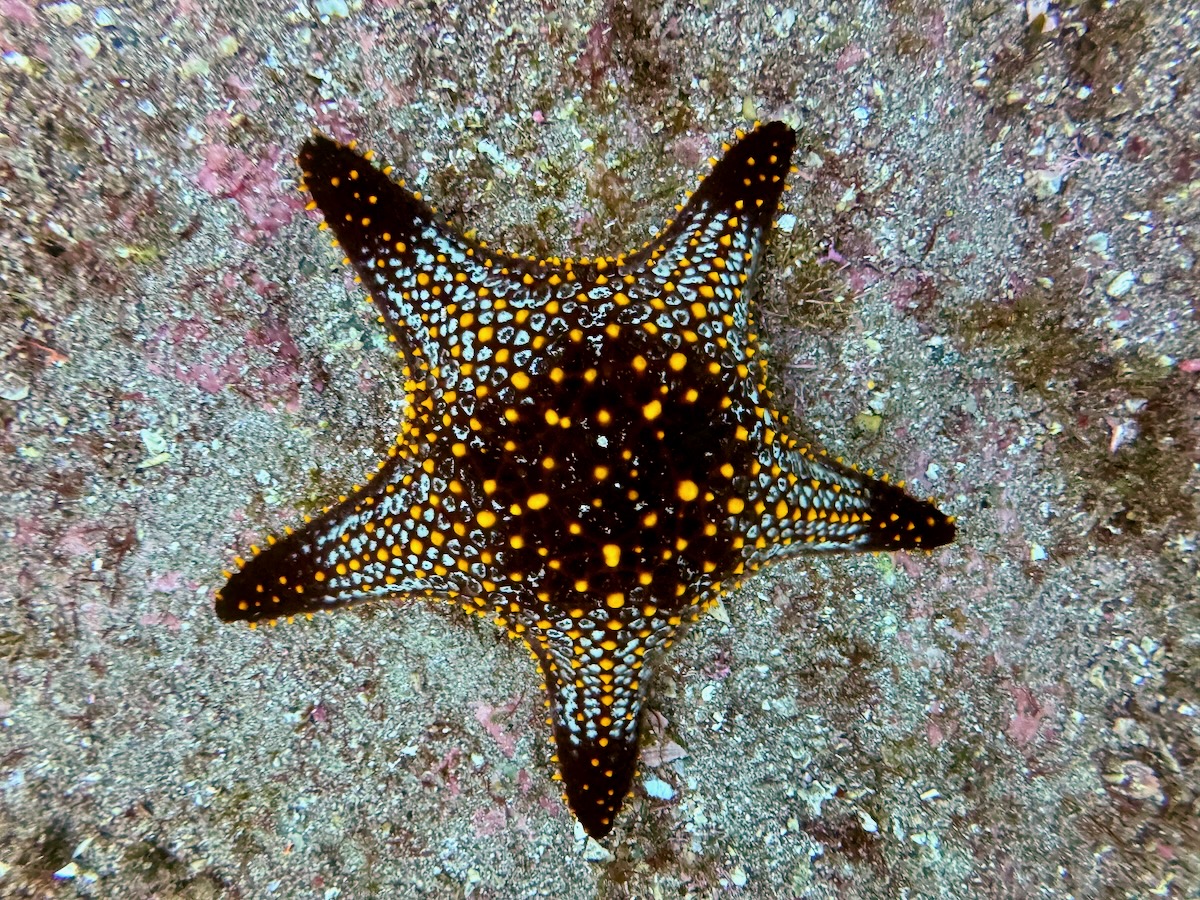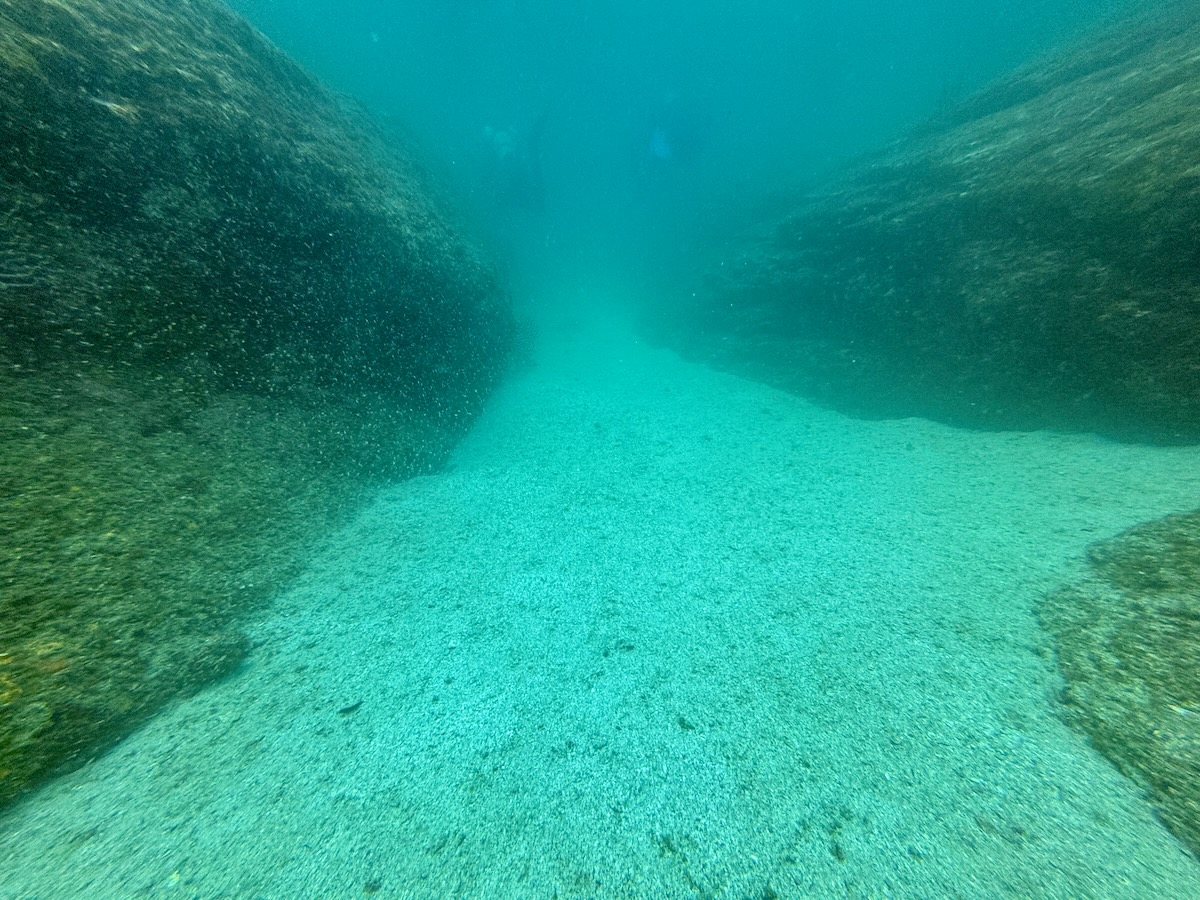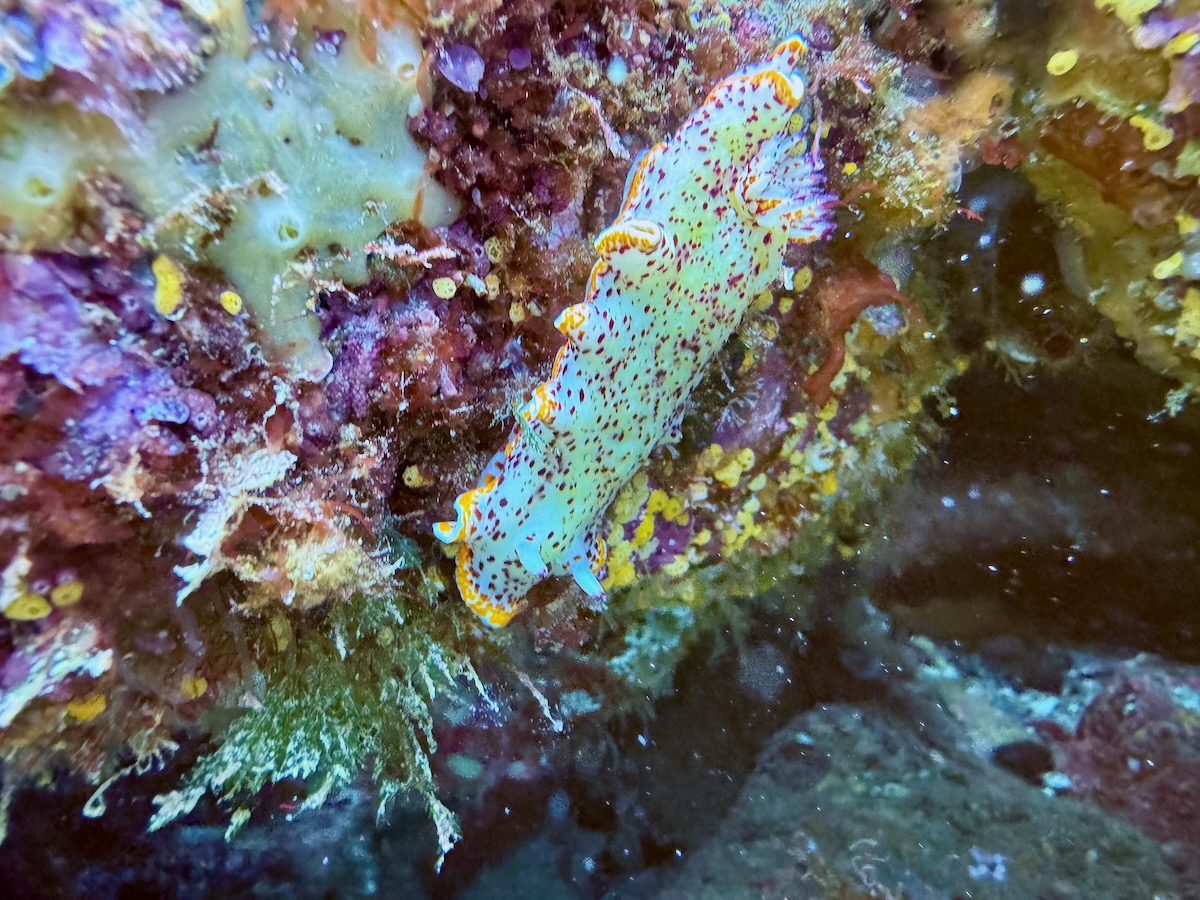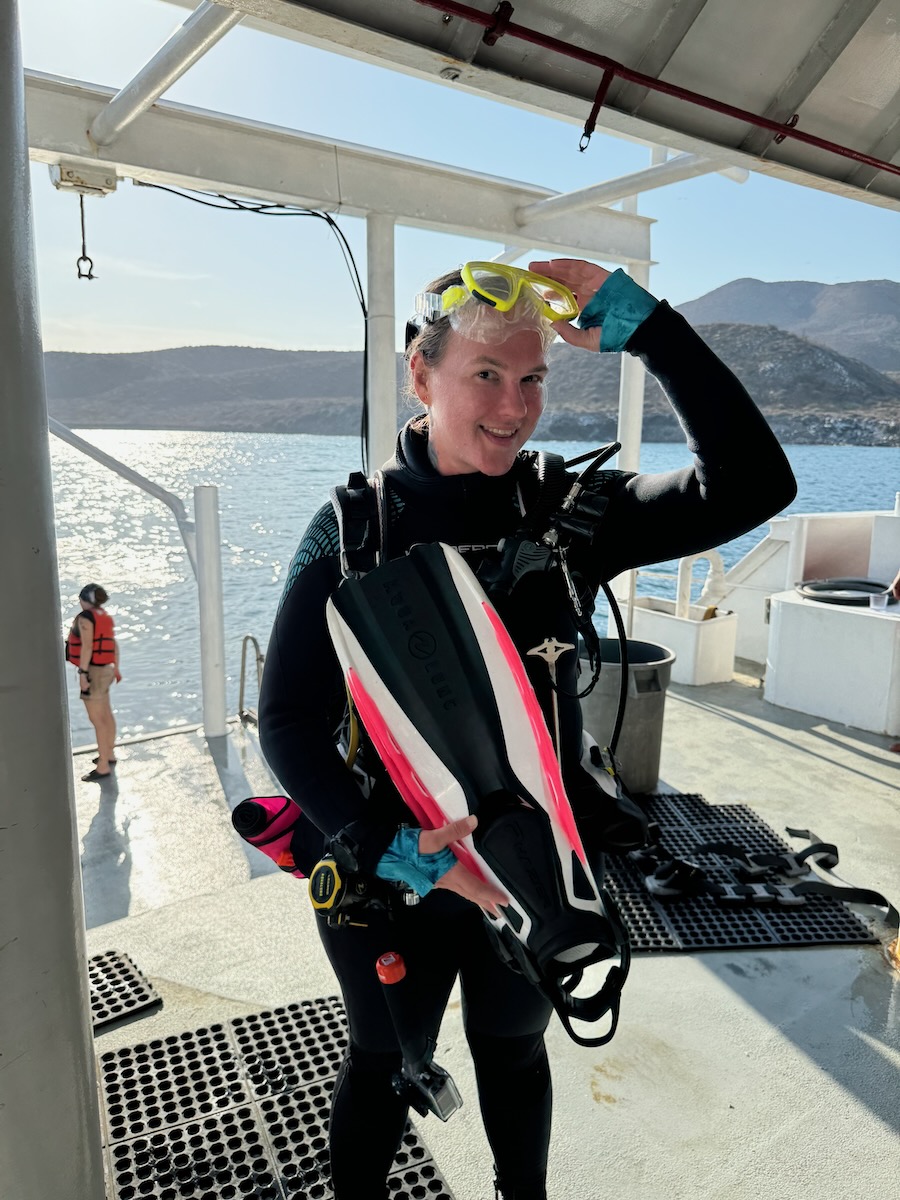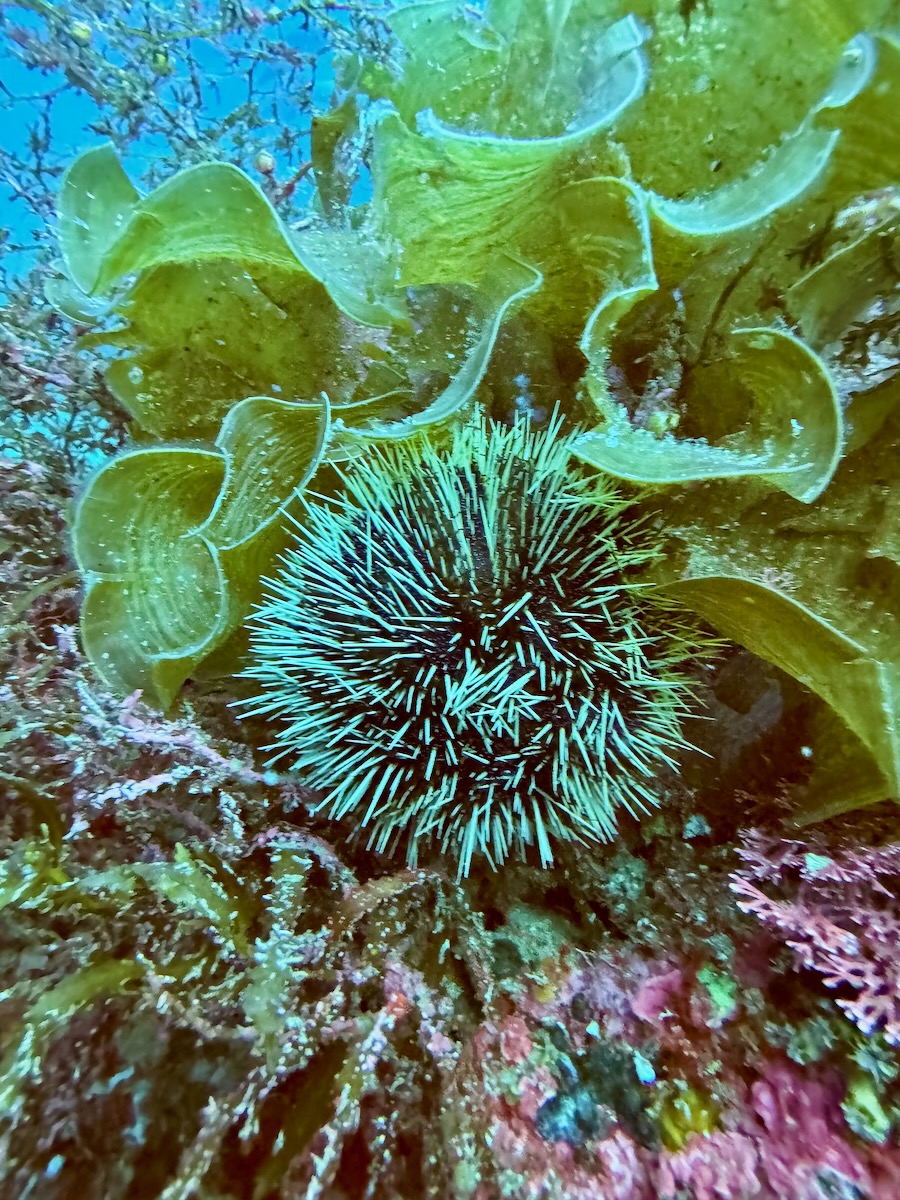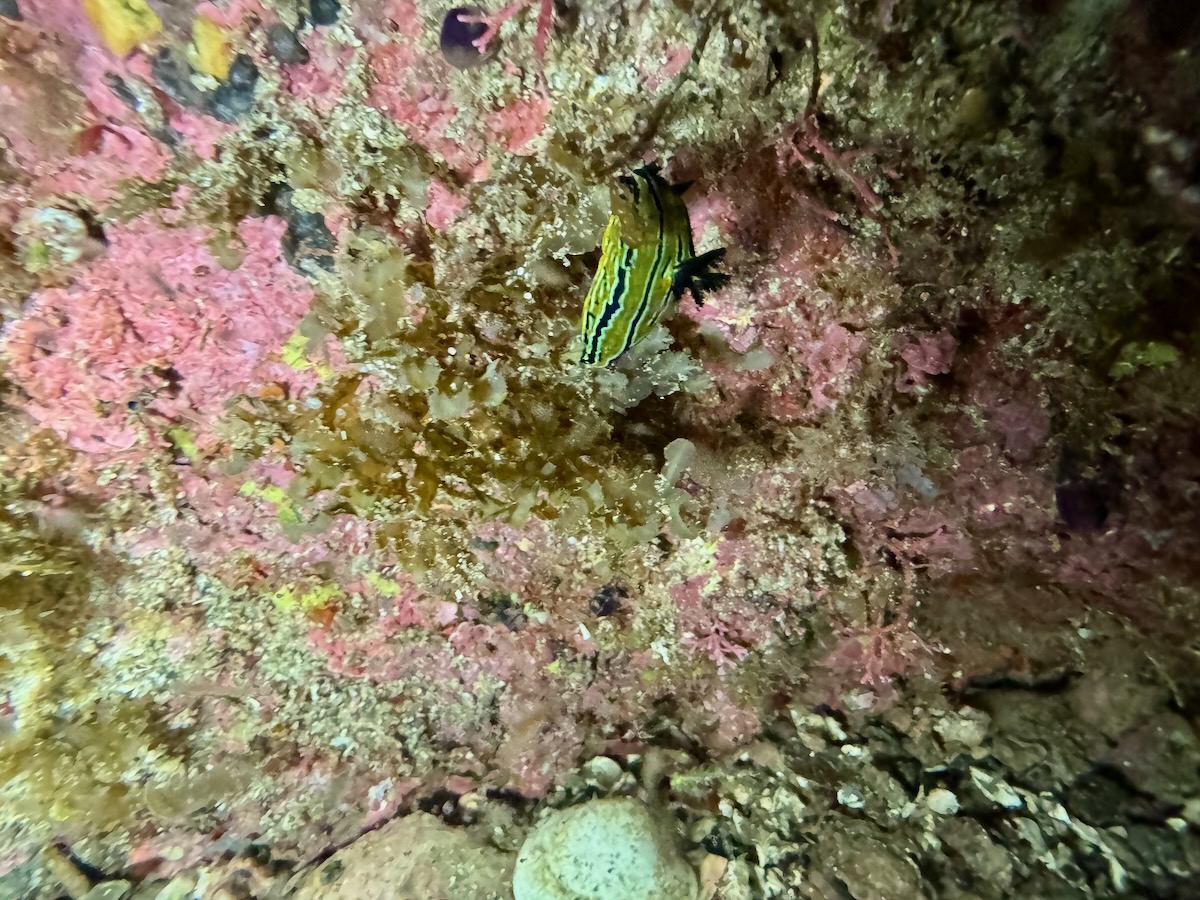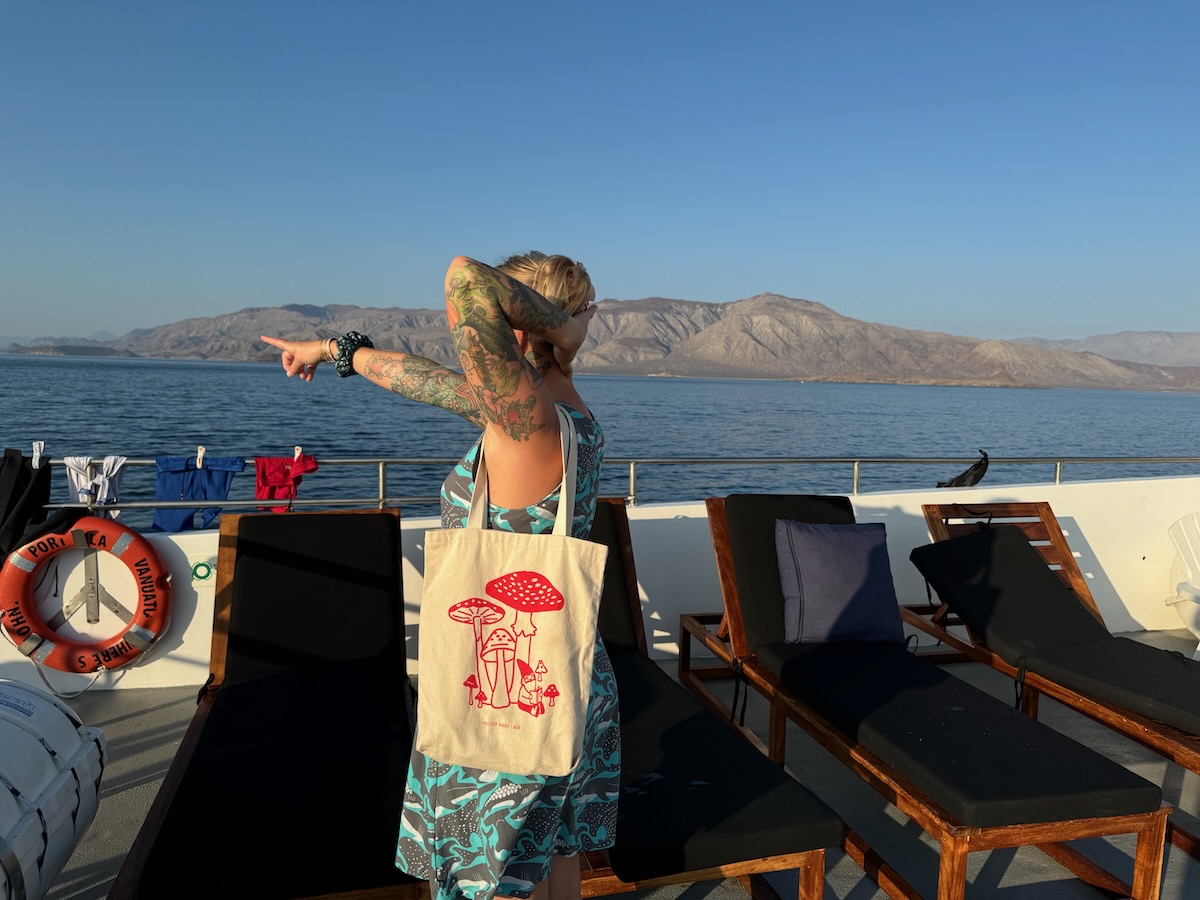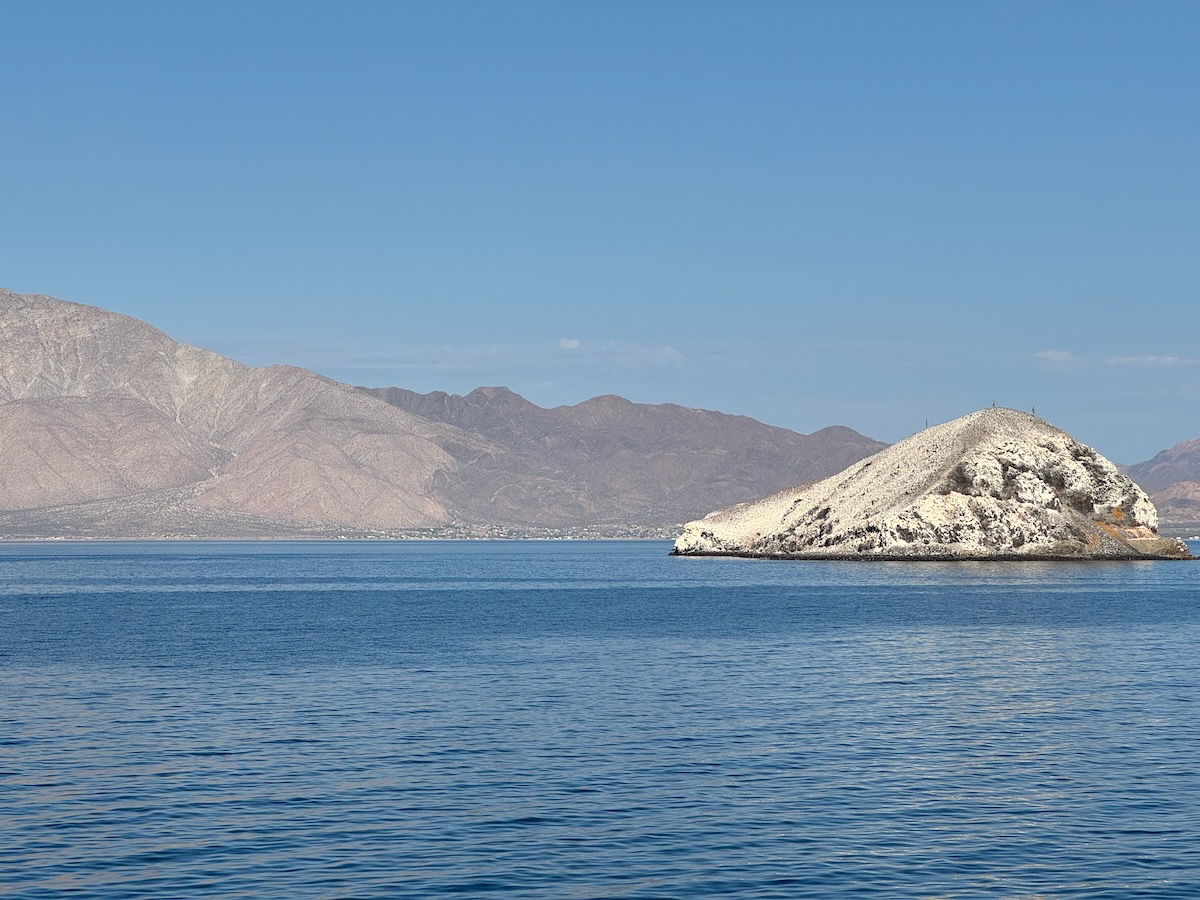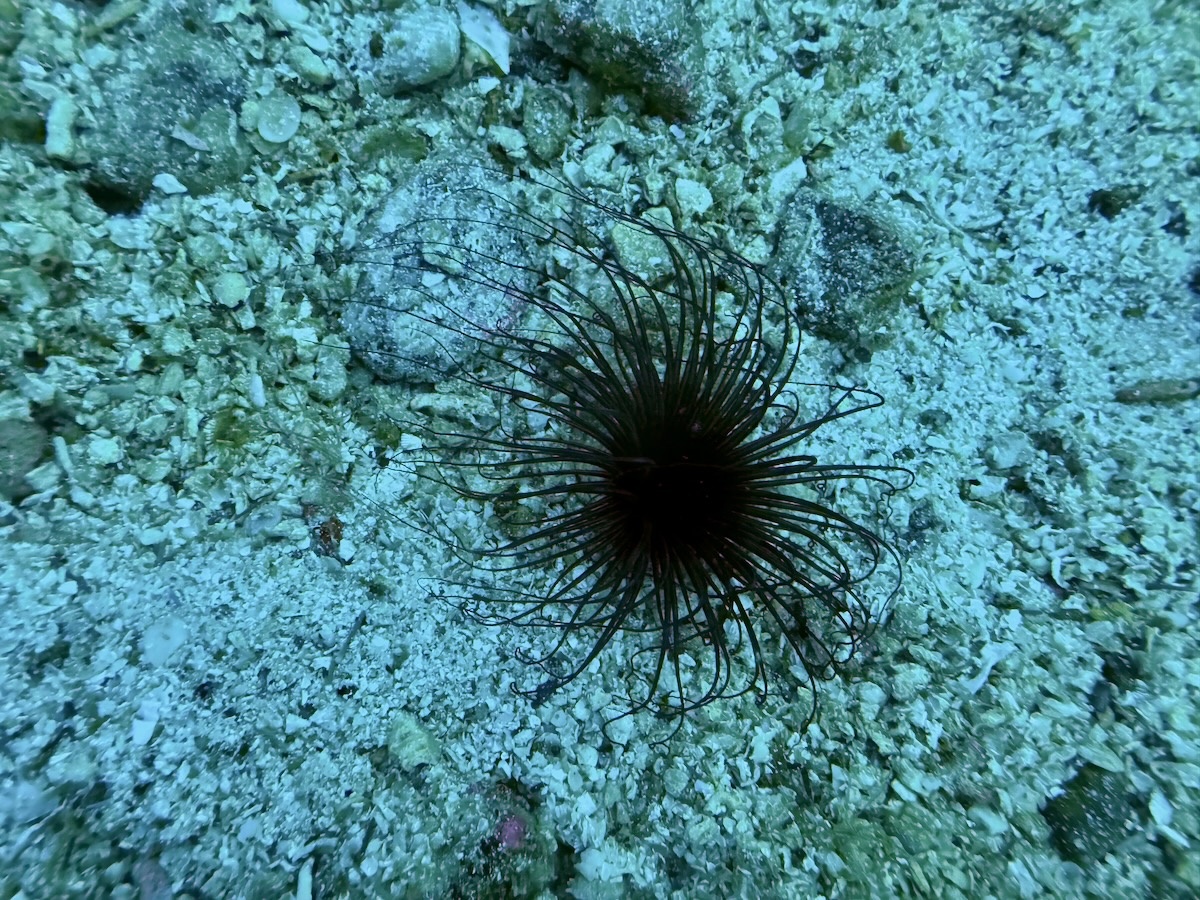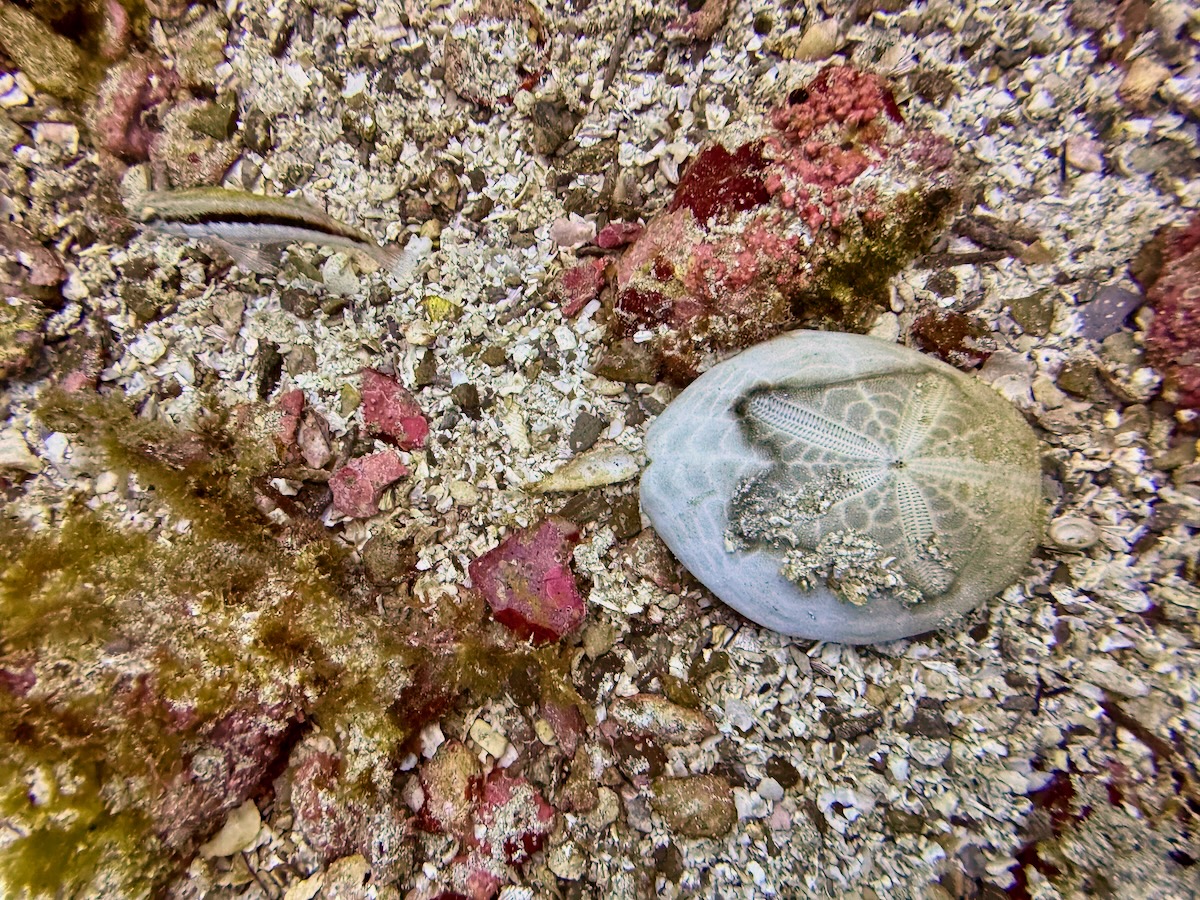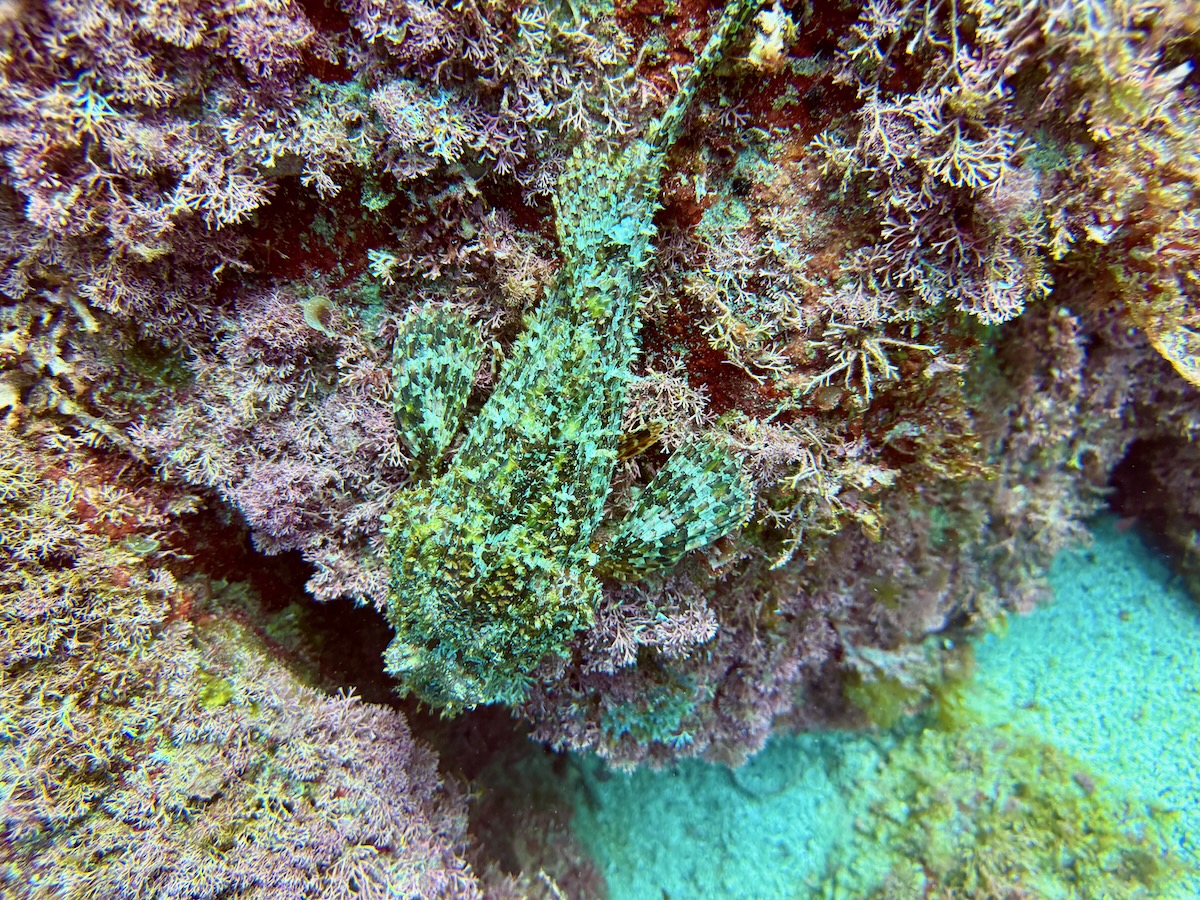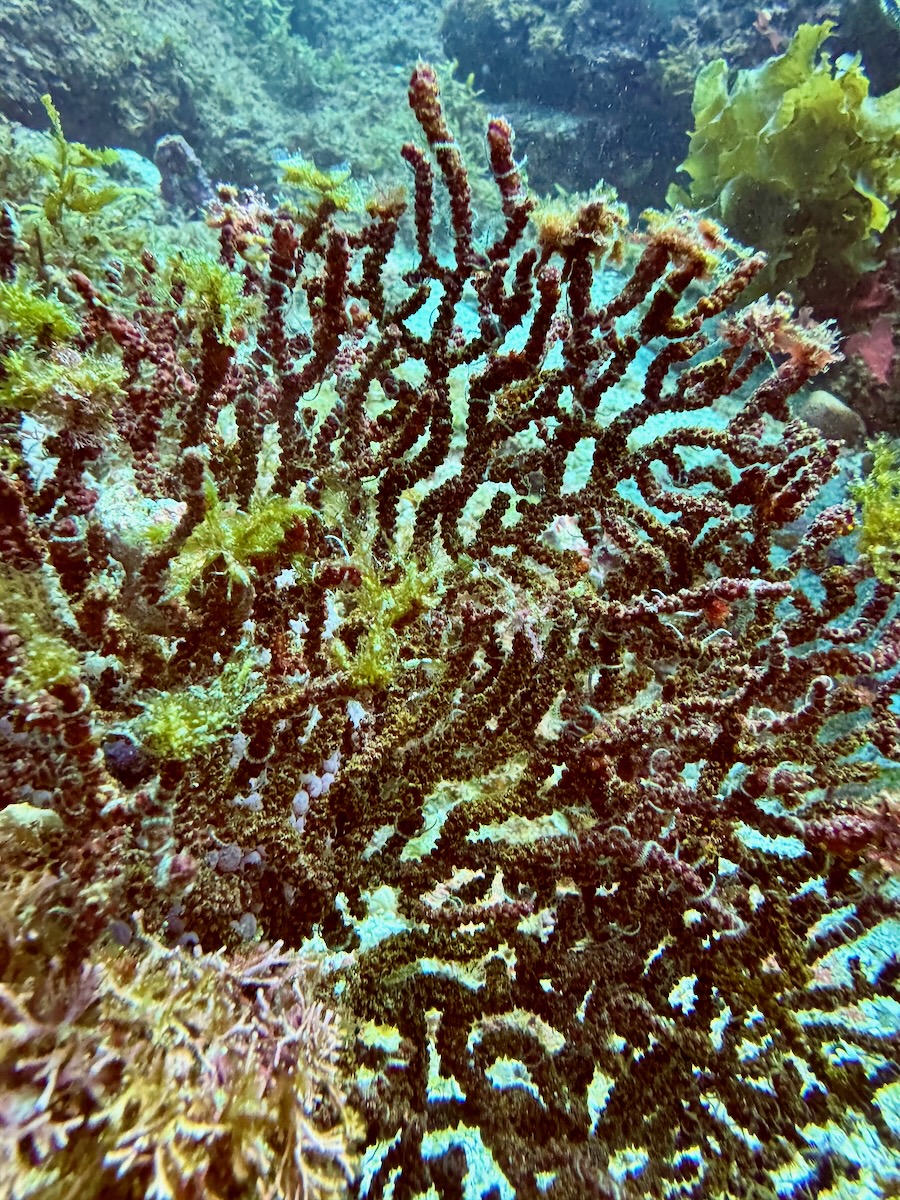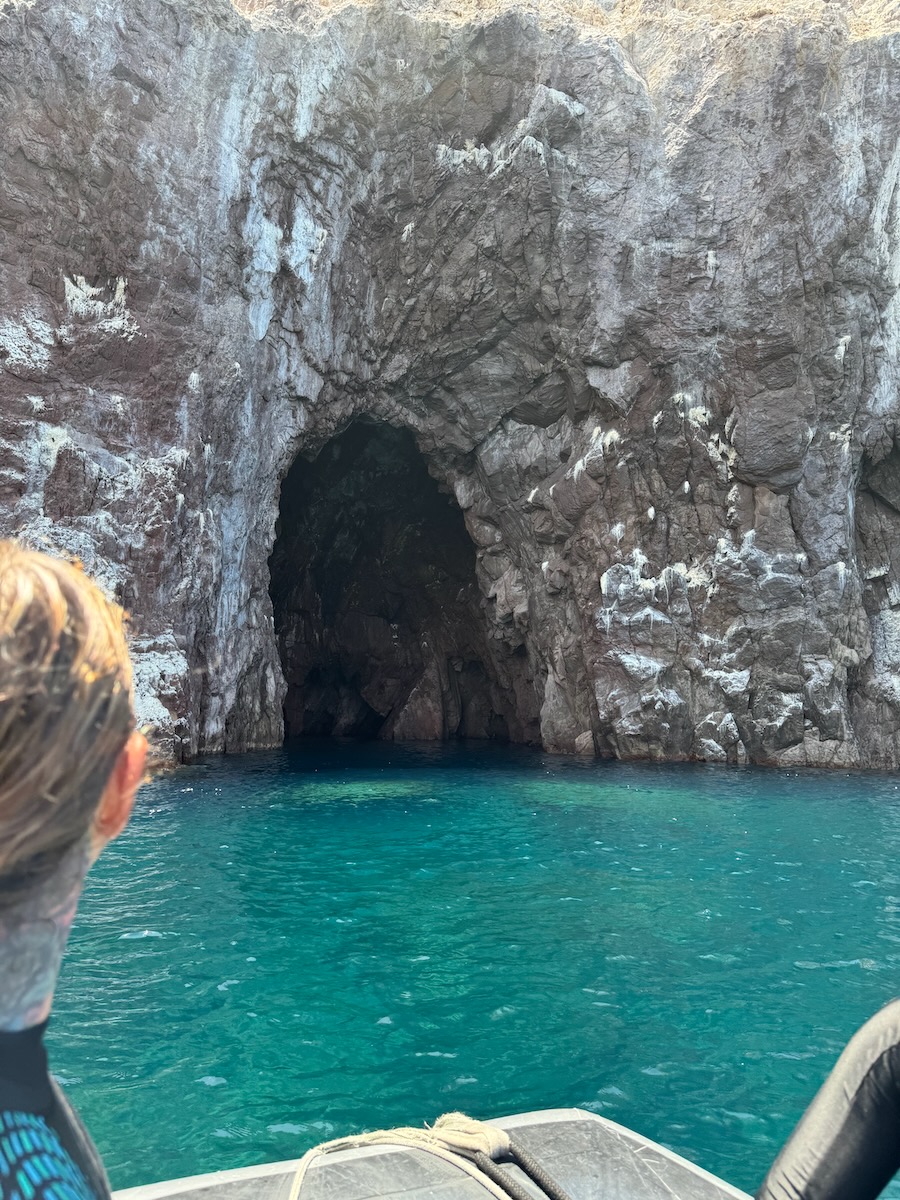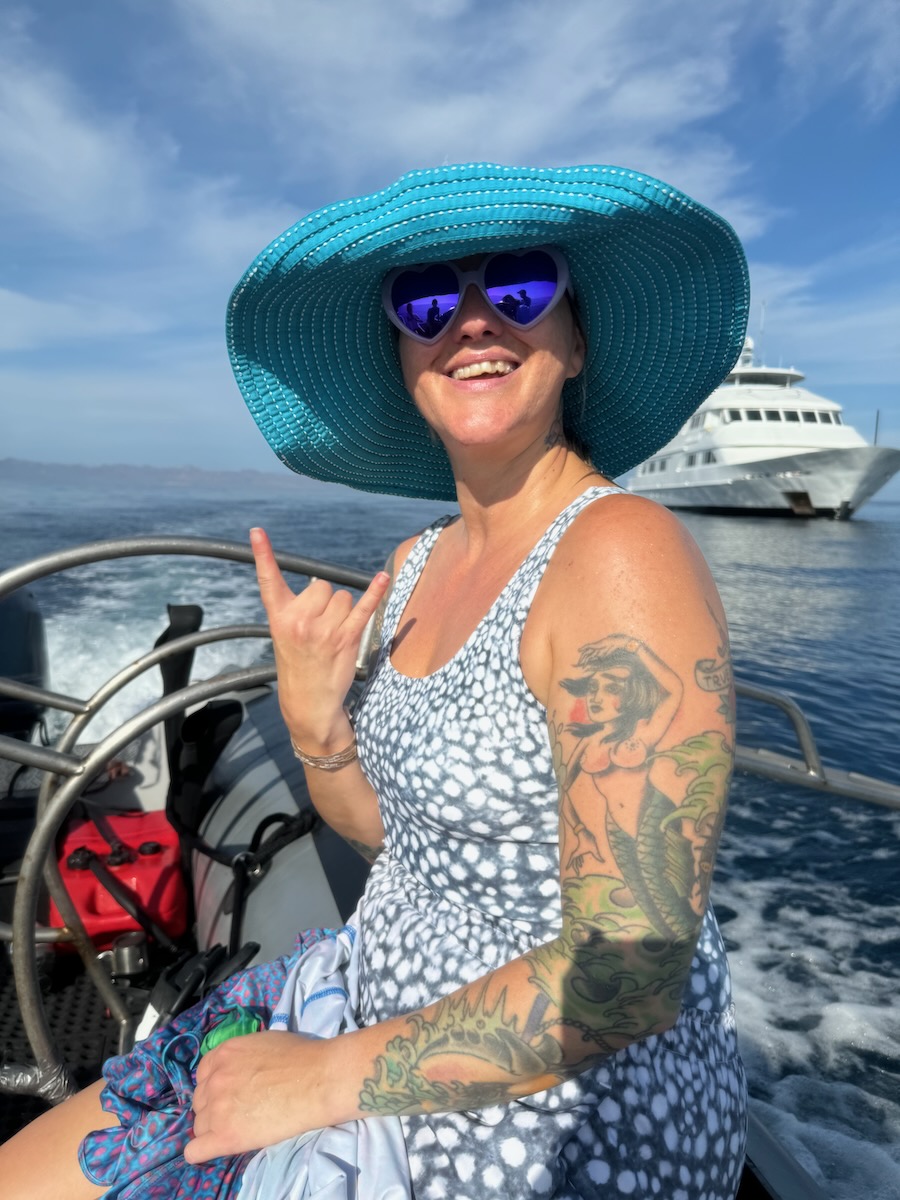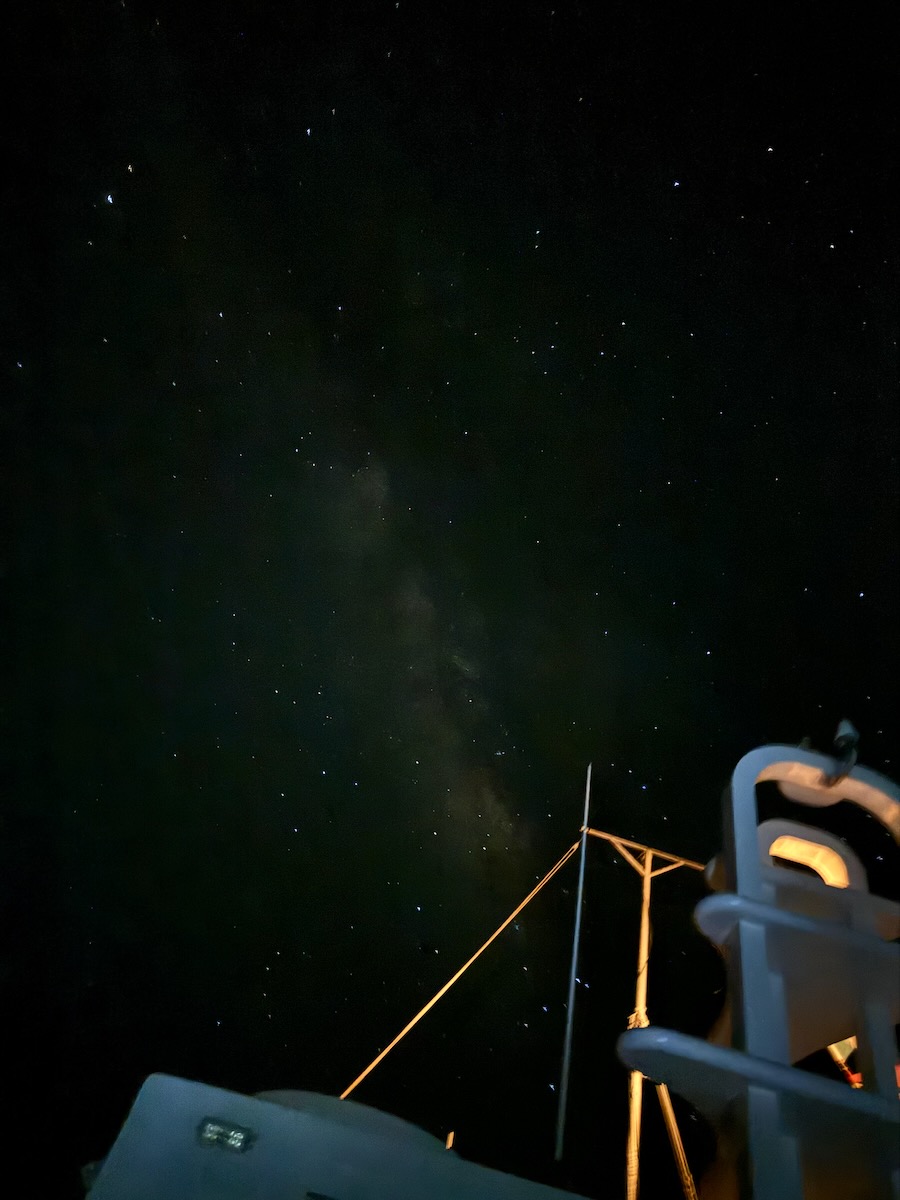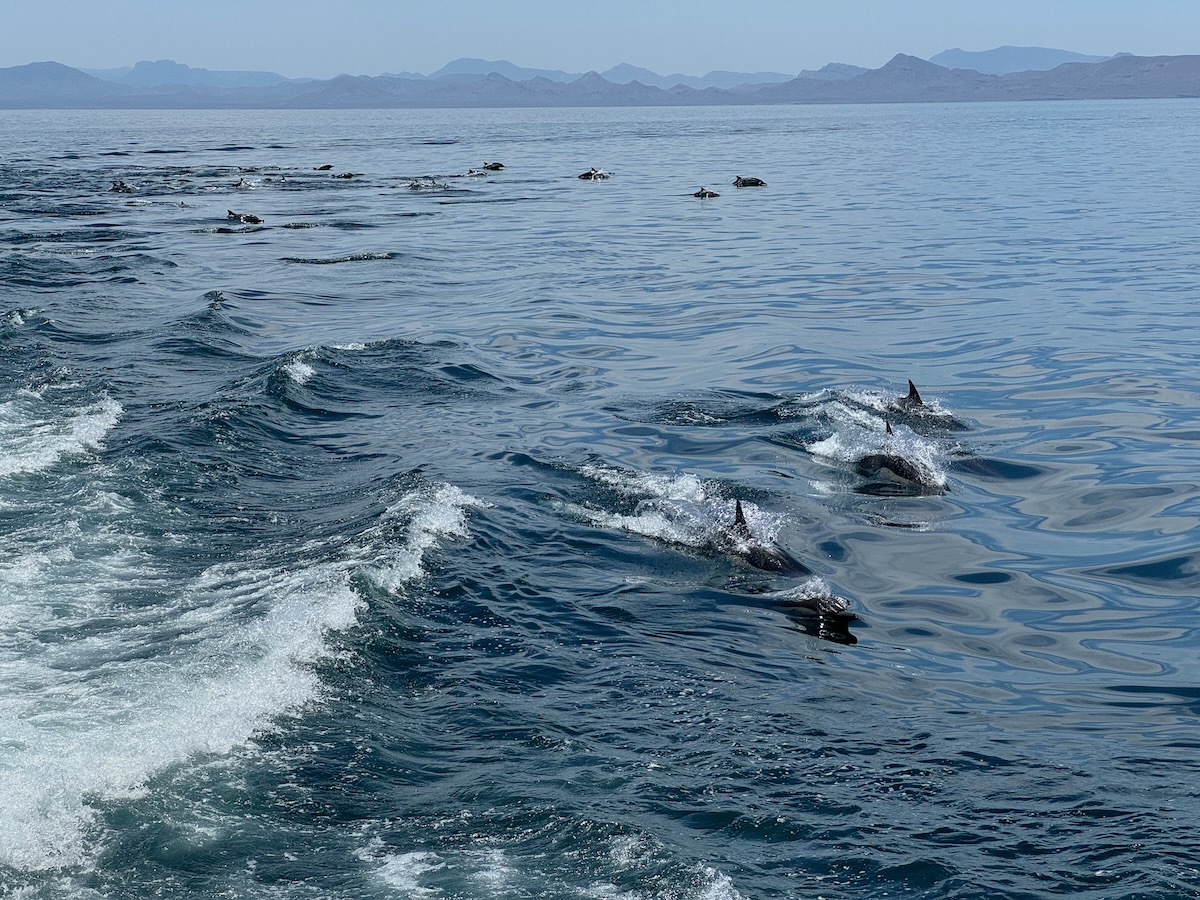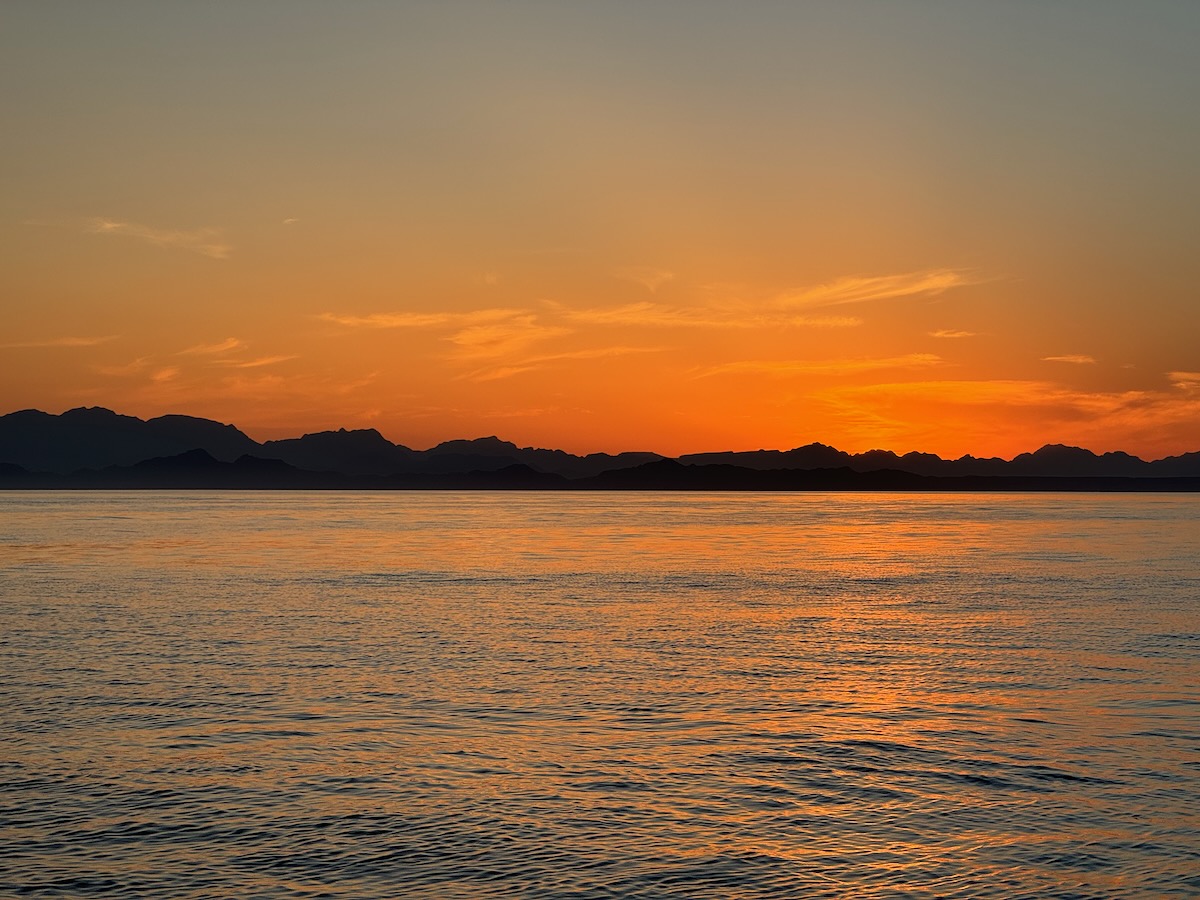Overview
Becca and I joined the crew of the Nautilus Belle Amie for their “Ultimate Whale Sharks” adventure trip in the Sea of Cortez. We chose the end of July into the first days of August because this seemed like a good time to catch both the end of the springtime sea-life activity, along with the start of the summertime sea-life activity. That plan worked for the most part and we saw tons of amazing sea-life from little nudi’s to whales, and lots between.
We flew direct from ATL to SJD (4-hours) and used Sealine Cabo Transfers to get to Cabo San Lucas (45 minutes) where the rendezvous location was (SeeCreatures dive shop). Getting through San José Del Cabo airport was a breeze. The worst part was waiting for our bags to come out on the carousel. We breezed through immigration and Becca got a green light when pressing the “random search” button at customs, so we walked right through all of that too. After a speed-walk through the gauntlet of time-share sales people, we met our driver right outside the doors. The drive to SeeCreatures in Cabo San Lucas was scenic, comfortable, and uneventful. The car dropped us off at the front door of the shop.
After dropping our bags off, signing the paperwork and showing our c-cards, we had a few hours to kill so we strolled around to look at the sites in Cabo San Lucas. Becca had found a nice looking vegan restaurant across from SeeCreaturs called EPIC, but they were closed (on vacation themselves!) so we looked around and ultimately got some veggie tacos at a spot called Taco Loco, and then went to look at the marina.
It was a 2-hour bus ride with the rest of the guests from SeeCreatues to the ship which was docked up in La Paz. Southern Baja is gorgeous and there were lots of sights to see along the way.
Dive Operator & Experience
Our trip was aboard the Belle Amie. The ship was very nice. Becca and I stayed in the “Dofleini” superior suite, one of the larger staterooms up on the wheelhouse deck. We had large windows that gave a great view. The bathroom was quite large and spacious. The only problem was that there was a leak, probably from the shower, that left a wet spot in the carpet near the door. Beyond that though everything was awesome.
I want to call out the food specifically. Both Becca and myself follow a strictly plant-based diet, and Chef Julio did a phenomenal job making meals for us that were both delicious and met our plant-based protein needs. We were so hungry at every meal I neglected to take any photos, but trust me when I say this was some of the best plant-based food I’ve ever had on a liveaboard.
The dive deck of the Belle Amie is…interesting. The dive deck itself is very large, but there are 3 or 4 really big camera tables (one used exclusively by the crew) that took up one whole half of the deck. There is also an area with bathrooms, and a stairway to the lower staterooms in the dive deck. That left about a third of the deck for 3 double-sided benches (with a fourth tucked in the back near the bathrooms) for the tanks and gear with crates under the bench for small stuff. This made it super cramped trying to get ready for the dives. We found it easiest to get suited up on the middle deck where the wetsuits hang, then wait out of the way for the other groups to get geared up and on the skiffs. Then we’d get on the benches to get geared up and do a buddy check.
All diving on this trip was from the skiffs. The guests were divided up into 3 groups and we rotated around which group got to splash first. Becca and I were in the “Blue” group. The first group would get on the skiffs, splash, then they’d come back and pick up the next group. Each group got to rotate around who got to get out to the site first.
The dive crew is beyond great. Every briefing was thorough and well explained, with secondary individual group briefings as well. Every dive is with a guide, and we had no complaints with the pace or their ability to point stuff out to us. Dives are limited to 60 mins and they asked us to be at our safety stops with 700psi left in the cylinders. We dove Nitrox, and the mix was consistently 31-32%.
Dive Sites & Conditions
Wow! I cannot say enough how totally awesome the diving is in the Sea of Cortez. This was my first time diving outside of the Caribbean (Becca has been to the Philippines), and I think after this, I may not dive the Caribbean much again. It was so full of life of all types and sizes—to the point that we had several dives with as little as 15 feet of visibility due to all the plankton/krill in the water. In the water we encountered everything from nudibranch as small as my pinky nail, to sea lions and whale sharks. And from the boats we saw sperm whales, fin whales, pilot whales, mobulas, a manta, and tons of dolphin.
There was a pronounced thermocline at 40 feet with a lesser one at 20 feet. Surface water temps were in the mid 80s °F. At 20 feet they dropped to low 80s to upper 70s °F. The thermocline at 40 feet dropped the temp to the low 70s °F. I use my Apple Watch Ultra for tracking temps since I feel like the titanium body transmits temps better than my Shearwater Teric’s plastic body. Min temp recorded was 70°F at 80 feet. Max temp was 84°F. I wore a good quality 3mm wetsuit with an additional 5/3mm hooded vest under that. I wished I had brought my 5mm suit instead of the 3mm though. Shallow dives were fine, but on the dives where we were below the thermocline for the whole dive I was cold by the end. Not shivering, but not enjoying it either.
Here’s a map of all the places we dove:
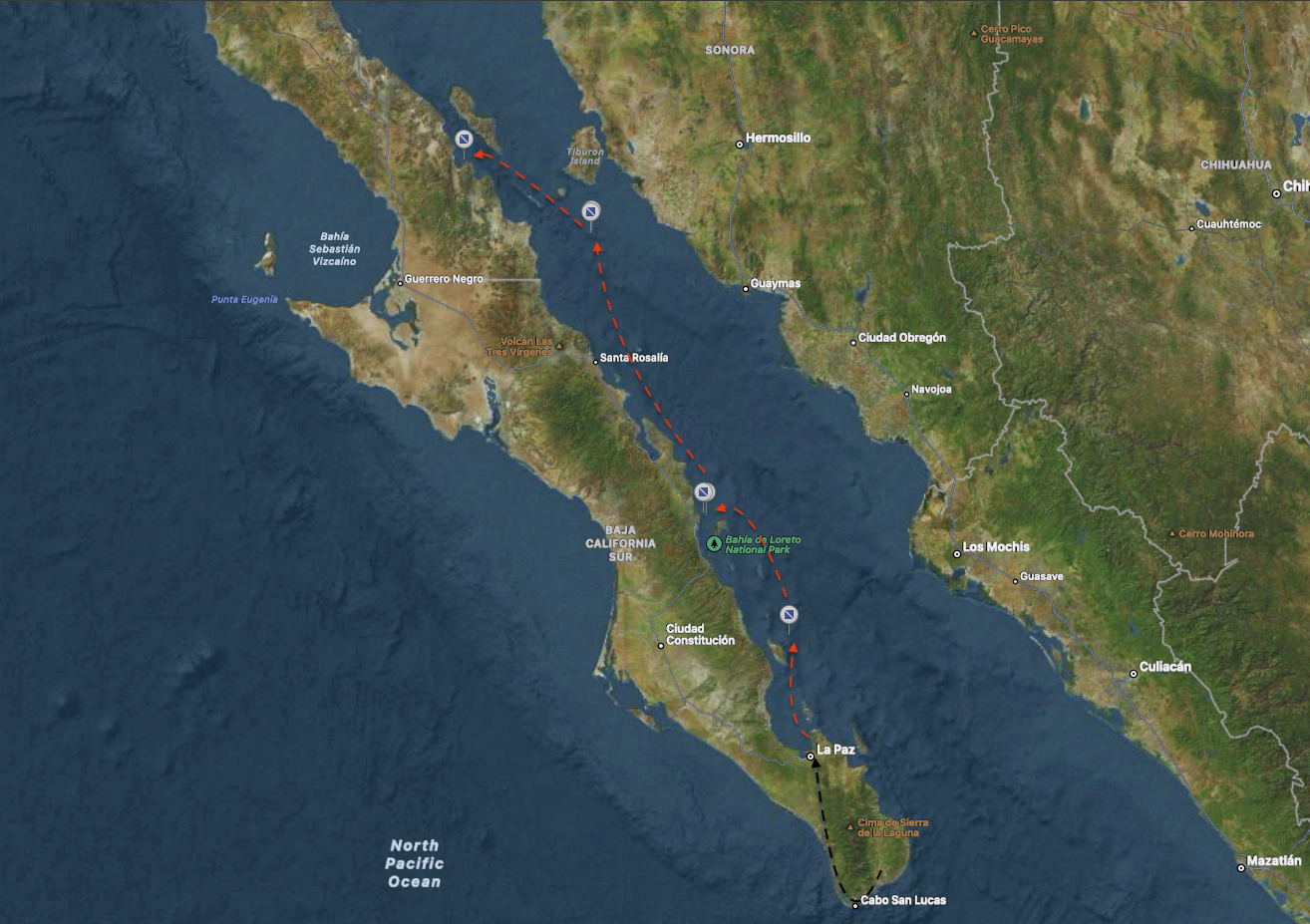
- Saturday:
- no diving, boarded the boat at 7:30pm
- Sunday:
- Las Animas (x3)
- Monday:
- La Lobelia, Isla Coronado (x2)
- Tijeras, Isla Coronado (x2)
- Tuesday:
- San Pedro Martir - north side (x4)
- Wednesday:
- Bahia De Los Angeles (snorkeling only)
- Bahia De Los Angeles - Punta don Juan (x1)
- Thursday:
- San Pedro Martir - east side (x4)
- Friday:
- Animal encounters from the skiffs with snorkels as we transited back to La Paz
Dive Log
Sunday — Day 1
We began our diving at a small island called “Las Animas”, located north of La Paz. This site is known for the large numbers of Hammerhead sharks that come to the island for the cleaning stations around it’s northern and western coasts. Unfortunately we didn’t see any sharks ourselves, though several others on the boat reported seeing them in the distance. We did most of our diving on the west side of the island where the Sea Lion colony resides. These were our very first dives in the Sea of Cortez, and the most standout thing about it was just how different it is from diving in the Caribbean. The topography, the notable thermocline, and the various fish were all very different from what we’ve gotten used to. And of course, diving with the Sea Lions was a completely new and exciting experience. I was completely surprised by how high up the cliff the sea lions were able to climb! I could see them sleeping in places a human would only get to with the aid of ropes and climbing gear—totally amazing!!!
The water was mostly clear, with possibly the best visibility of the trip at about 50-70 feet. We had three dives at this location, visiting different areas around the island on each dive. The ship stayed anchored in the little bay formed by the curve of the west side of the island, and the skiffs took us to the dive sites. We stuck to the west and north ends of the island.
Monday — Day 2
For our second day of diving we cruised north overnight to Isla Coronados. We dove at two sites here, La Lobelia at the north end of the island, and Tijeras on the southeast end of the island. These were nice dives though the visibility here was less than on Sunday and very variable, ranging from 15-45 feet. The water was more cloudy and green below the thermocline. I was able to practice deploying my DSMB at our safety stop today.
We dove twice at La Lobelia visiting different ends of the coast near the ship, then we motored down to Tijeras while we ate lunch and dove two areas there. I think the most notable experience of these dives was the rich plankton and little krill-like shrimps in the water. It was so thick it limited visibility! It’s very interesting to see how fertile the waters of the Sea of Cortez are. Despite lots of life in the area, the water was cold and the viz very low, so it was still fun (any dive is better than no dive), but not as memorable as day one.
Tuesday — Day 3
We had a long overnight and morning trek up to Isla San Pedro Martir and we didn’t do our first dive until 11am, after breakfast. We dove on the northeast end of the island for four dives, with the last dive being a night dive. Our first dive was pretty deep with a max depth of 88 feet. The most notable thing about this site was the massive amount of black coral. There were huge areas covered by the coral on all of the deeper sloping walls. Black coral gets its name because the skeleton of the coral is black. However, the coral polyps are bright greenish yellow—almost fluorescent—so they don’t look like their namesake when they are alive and open. Becca was able to get a bunch of practice in deploying her DSMB at these sites, and she used it on almost every dive. She did a really great job with it, and is definitely better at it than I am.
The night dive was notable to me because of all the plankton and “bugs” in the water that were drawn to our lights. Any night dive in productive waters is going to attract “bugs”—which consist of pelagic little crustaceans, worms, and other invertebrates—that live in the deep waters during the day and come up to diving depths at night. This was different for me though due to the absolutely huge numbers of them. There were so many little critters swarming around my dive light that it looked like I was holding an ice cream cone. I neglected to wear a full hood on this dive and I paid for it. I got a little worm in my ear (it didn’t stay in there long) which freaked me out, and I got stung on the face by a jellyfish. There was a lot to see, but I had a hard time enjoying it due to the distraction of all these night critters in the water.
Notable shout out: In the morning, before our first dive, we saw a fin whale from the dive deck of the ship as we were getting ready to dive! It was gone by the time we splashed, but it was still super awesome to see this with our own eyes.
Wednesday — Day 4
Whale shark day! Today was all about snorkeling with whale sharks (and we did get one dive in the afternoon before leaving the bay). We went out in the morning after breakfast then returned to the ship for lunch. We then went back out for a second visit. Rather than using the skiffs, we were met at the ship by local “panga” boats operated by the locals who live on the shores of the bay. There were four boats in total that we divided up onto. We motored up into the very innermost part of the bay to meet the whale sharks. There were perhaps as many as 20 whale sharks in this part of the bay. The locals have marked off the shallow waters where the sharks congregate, so that boats know to travel at slow speeds and to denote the no-fishing area. We learned quickly why all these whale sharks were in the area. The water was absolutely teeming with little invertebrates of some sort that were no bigger than poppy seeds. They were so thick that they got under our rash-guards and collected around any seams/cuffs. They were a little itchy, but they didn’t bite or anything. The whale sharks were there to eat this smorgasbord of little critters.
Not only did we see lots of whale sharks, but there were also thousands of sardines down towards the bottom at about 10-12 feet deep. They seemed to be avoiding the surface since the whale sharks were feeding there. We also saw two types of mobula rays. There were many small tan-colored rays in groups. Each ray was only about 1-1.5 feet from wingtip to wingtip. Along with the little rays, we saw several larger mobula in the 3-foot across size range, that were jumping out of the water and in some cases doing backflips in the air. These were the more well-known variety you’ll find online in videos with dark-brown, almost black tops and white bellies. To cap the day off we got to cruise with a small pod of bottlenose dolphin and there were several young in the pod. My guess is they were there for all the sardine. I didn’t have my phone with me, but Becca got some great video of the dolphins!
After all the snorkeling we had a short break as we cruised to the outskirts of the bay, to dive at the cliff wall of a point of land called “Punta don Juan”. This dive site was a sloping wall made up of boulders that ended in a sandy bottom around 60 feet deep. The water was warm—being in the bay—but very green. Of the notable encounters here, we saw two giant jaw-fish (I found one, and Becca found the other!) and a bright orange tube anemone that had a nudibranch and shrimp living next to it.
Thursday — Day 5
On our final day of diving we returned to Isla San Pedro Martir and dove along the eastern point of the island, keeping out of the prevailing current. The dives were nice, not too cold, and with decent visibility. Notable encounters were with the sea lions who were very friendly and curious—getting quite close to us, and two green sea turtles, one of which was a giant of a green sea turtle—the biggest I’ve ever seen. Our final dive was cut a bit short by the increasing current. We had planned the dive to stay in a particular area, but the current was getting too strong for that. In hindsight we should have turned it into a drift dive, but there was a good chance we’d have been swept away from the island and caused trouble for the skiffs to come and get us. So we cut the dive short to get picked up before we went too far away. It was a really good experience that I’m grateful for, as all divers should know how to handle strong current.
Friday - extra
While we didn’t dive this day, I still wanted to talk about it because of all the awesome encounters we had from the skiffs while cruising back to La Paz to disembark. In the morning, right as we were getting ready for breakfast, we found a pod of sperm whales, including a mom and calf not too far from the ship. We all rushed out in the skiffs and had a good couple of hours whale watching—including some classic tail shots and spy-hopping by the sperm whales.
The captain reported that there were probably 10-20 whales spread out over a couple miles in front of Bahia Concepcion, but it’s hard to say exactly. Later in the day, we came across a big pod of common dolphins who rode the wake of the ship for almost 30 minutes, and again later another big pod of bottlenose dolphins. We ended the day with an encounter of a pod of pilot whales! It was so cool getting to see these various cetaceans up close.
Photos & Videos
Gallery
Here are a bunch of photos from the trip.
